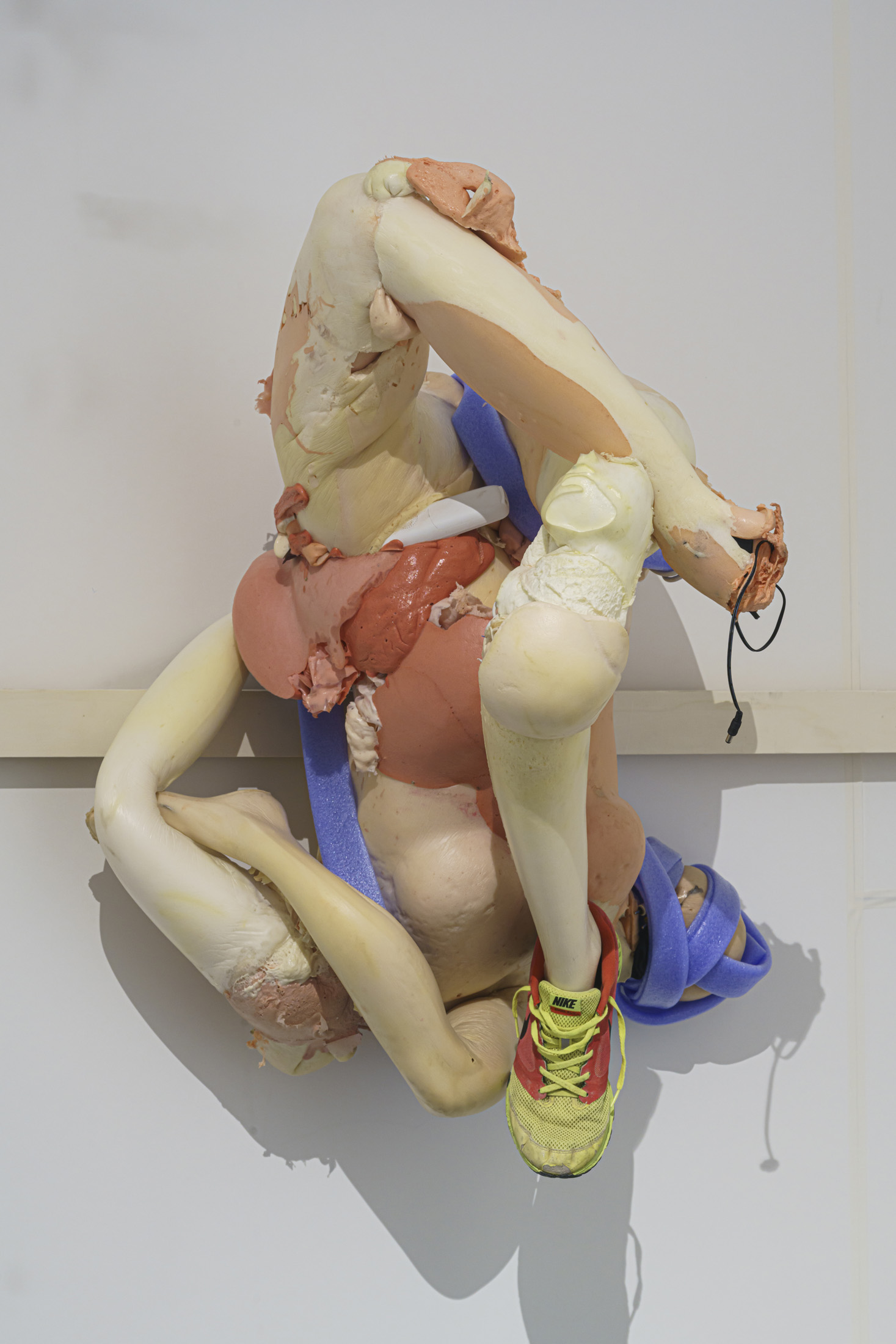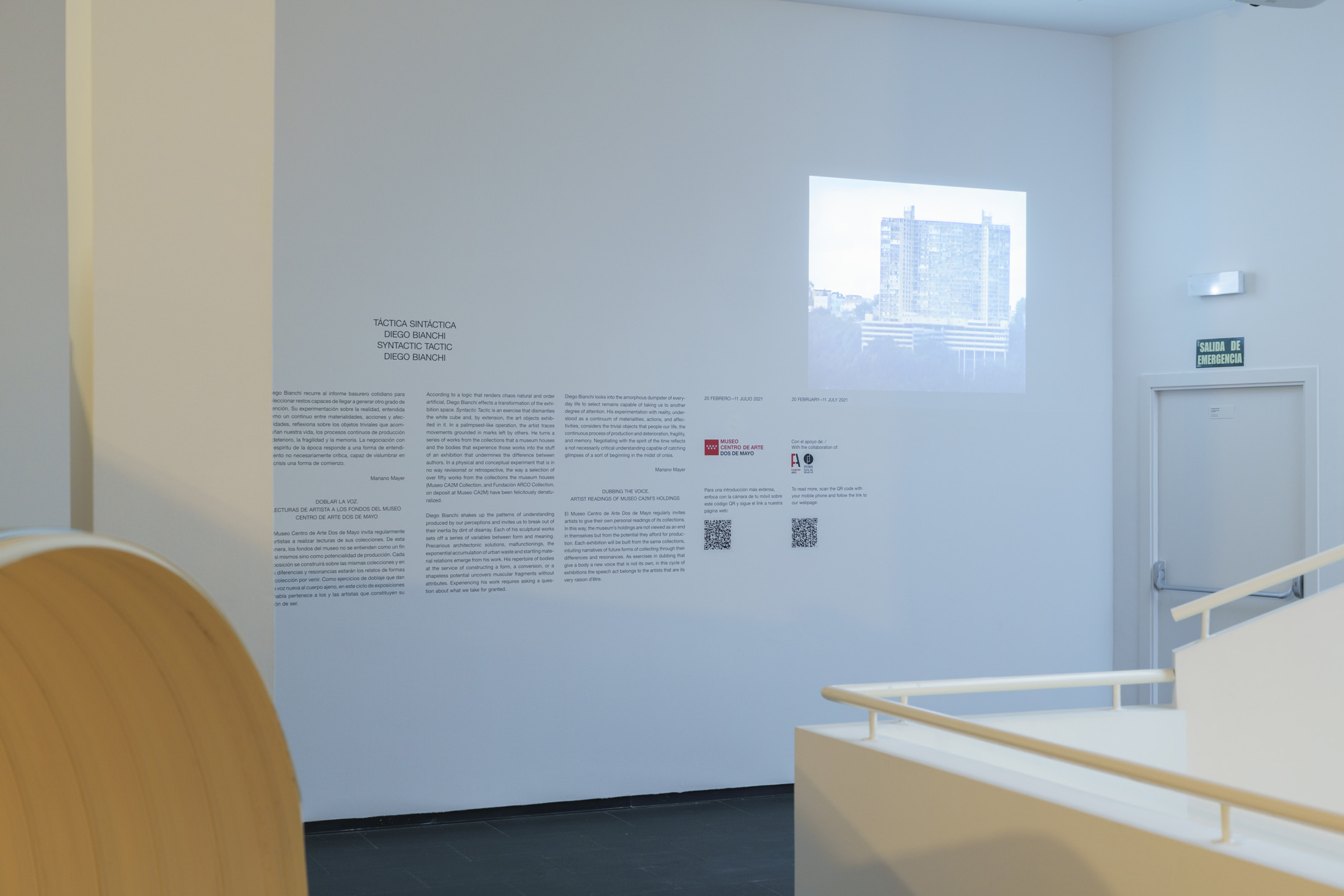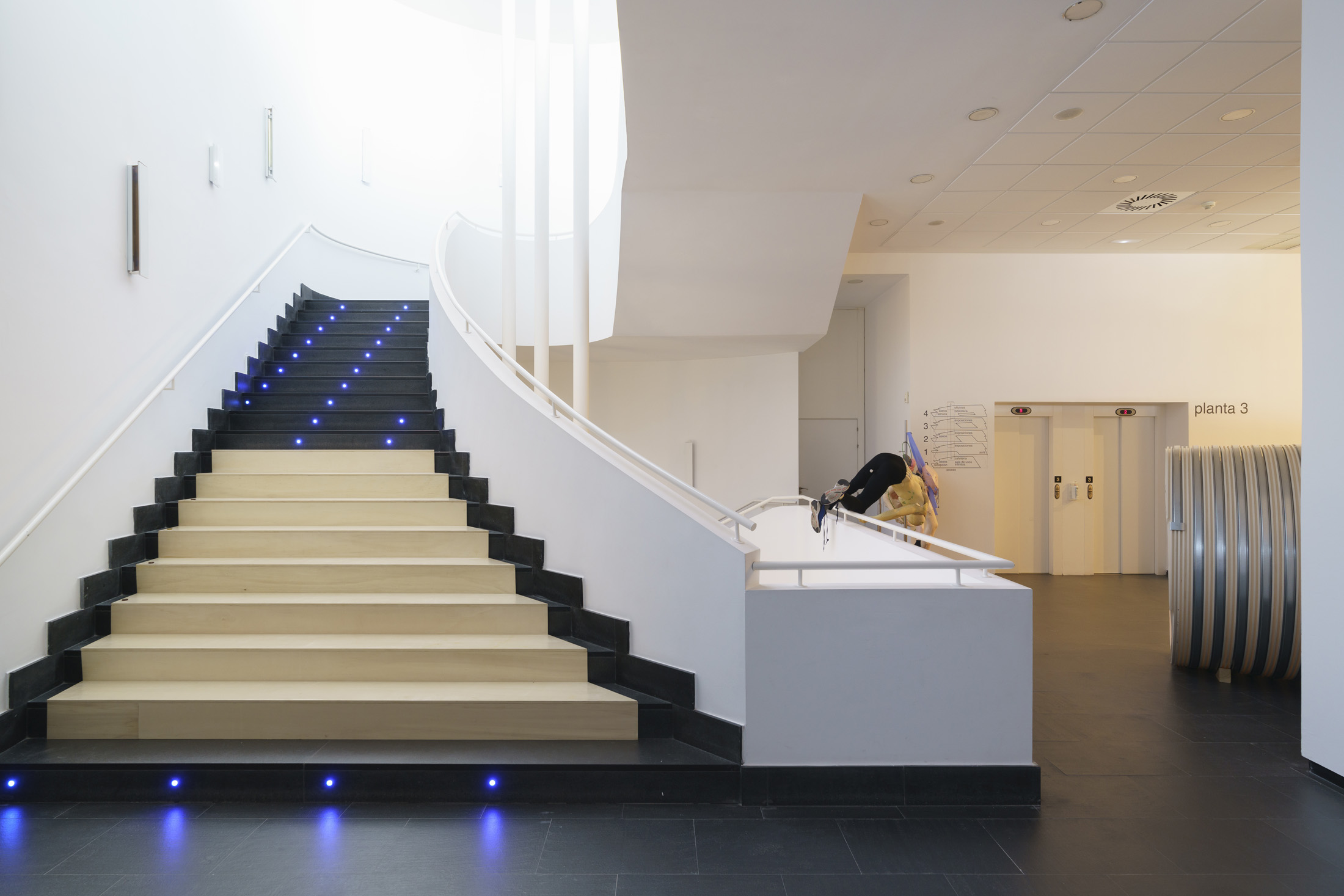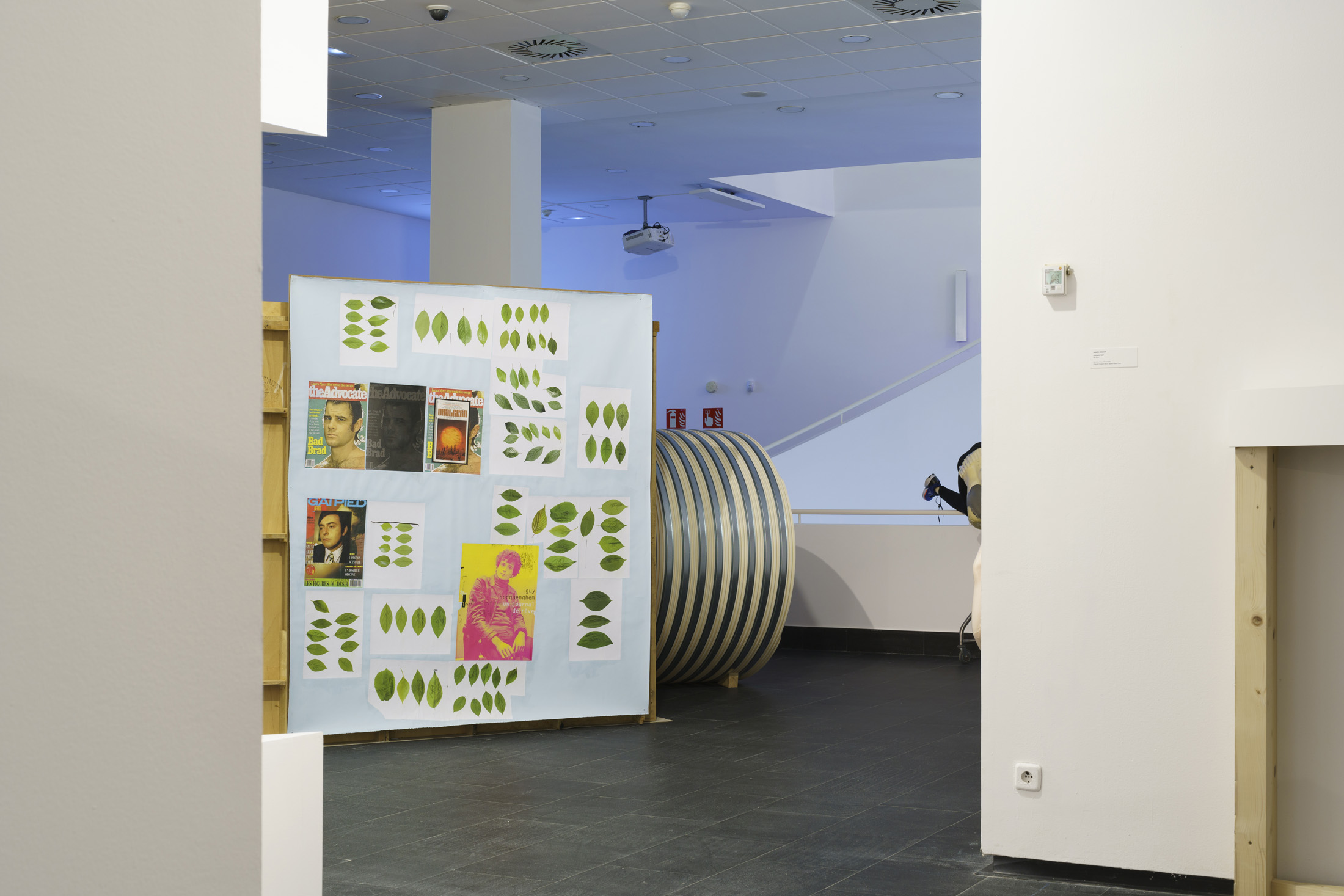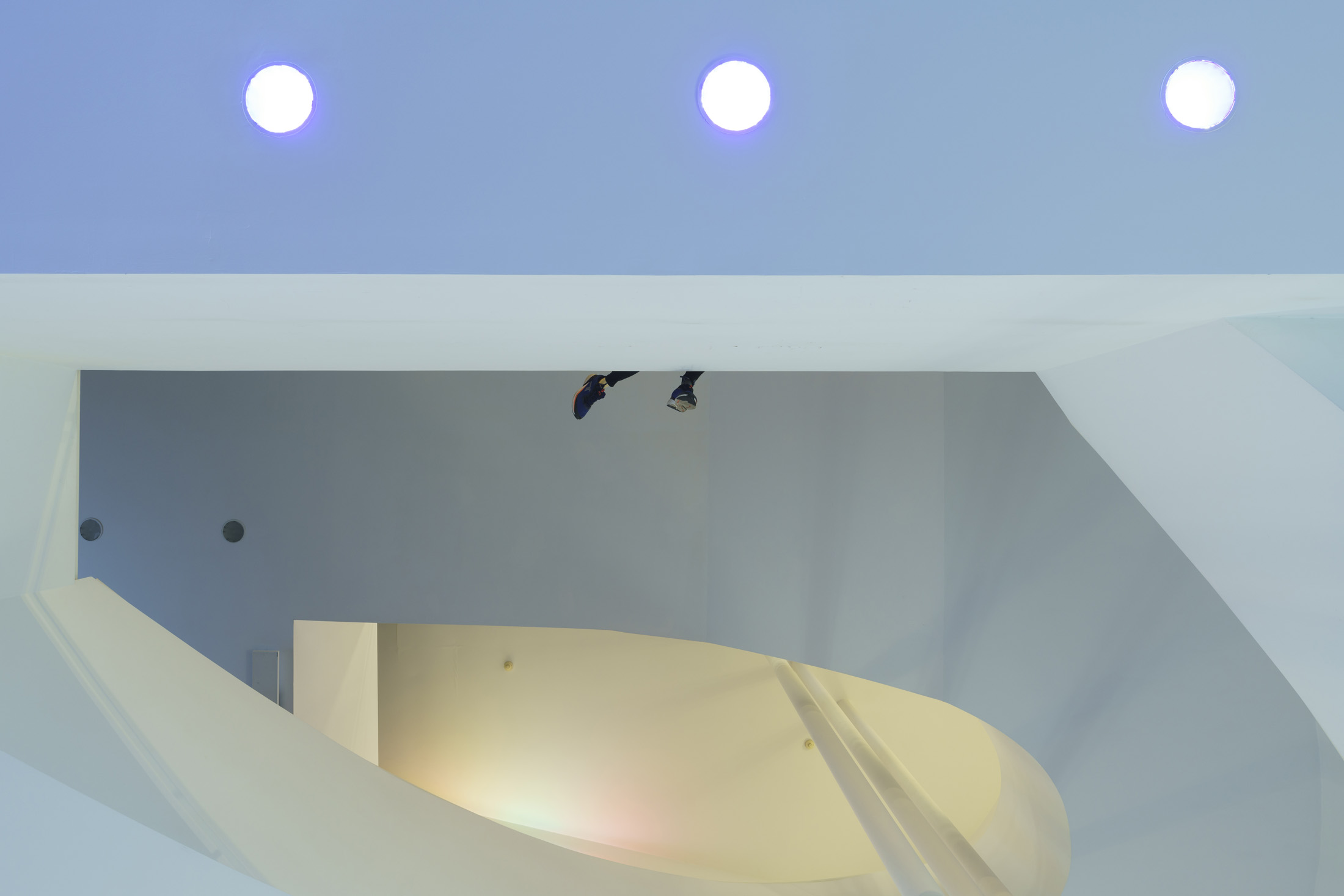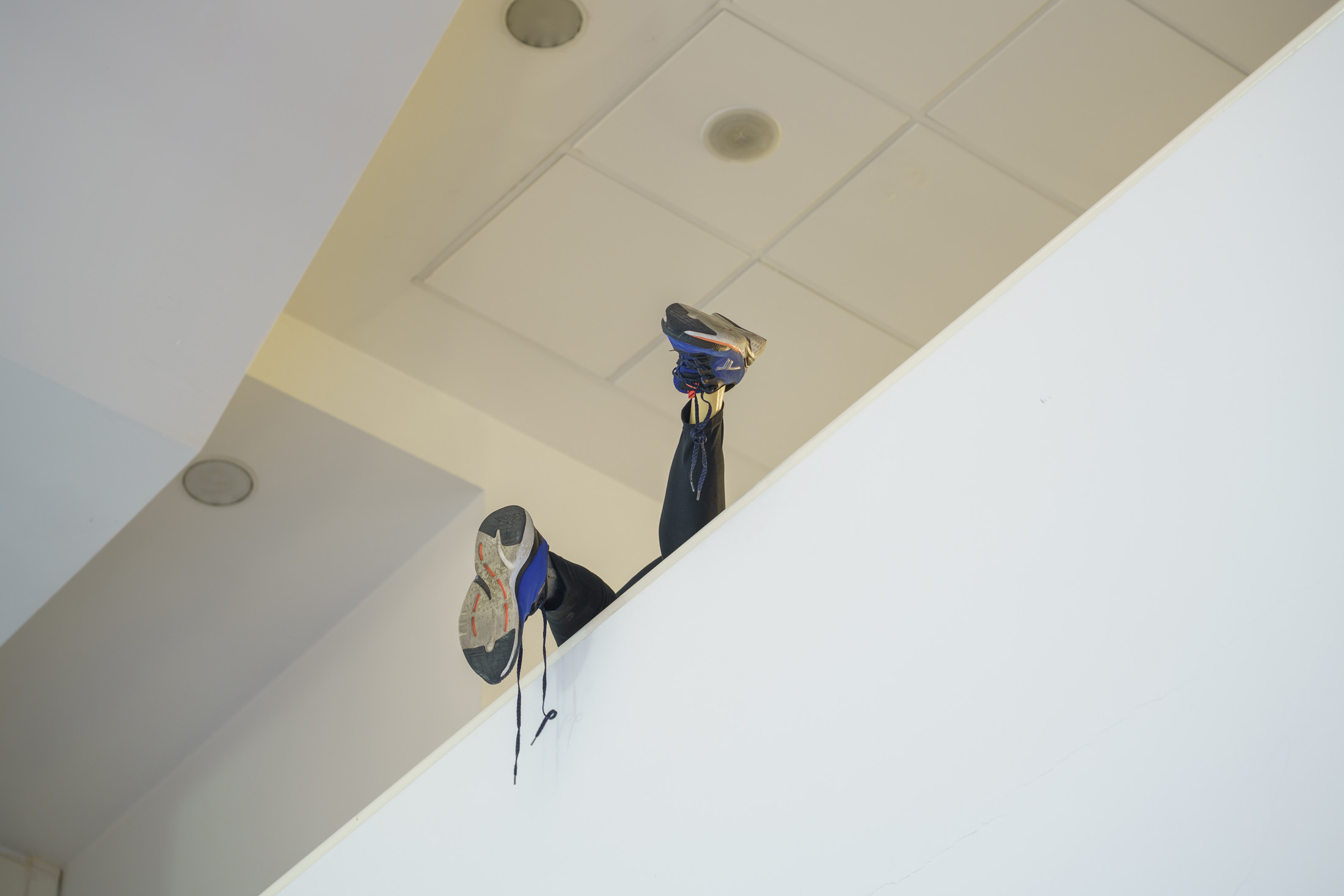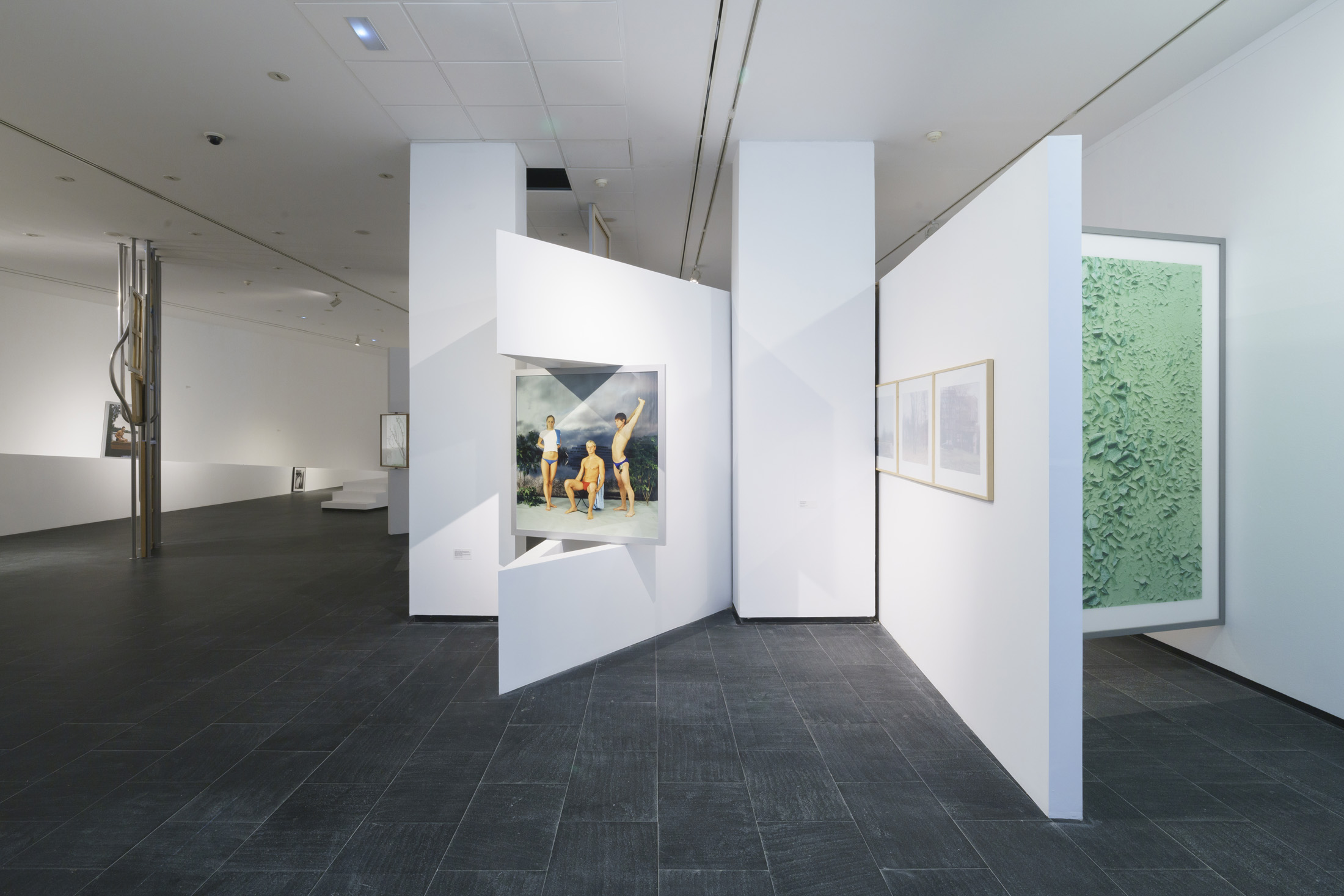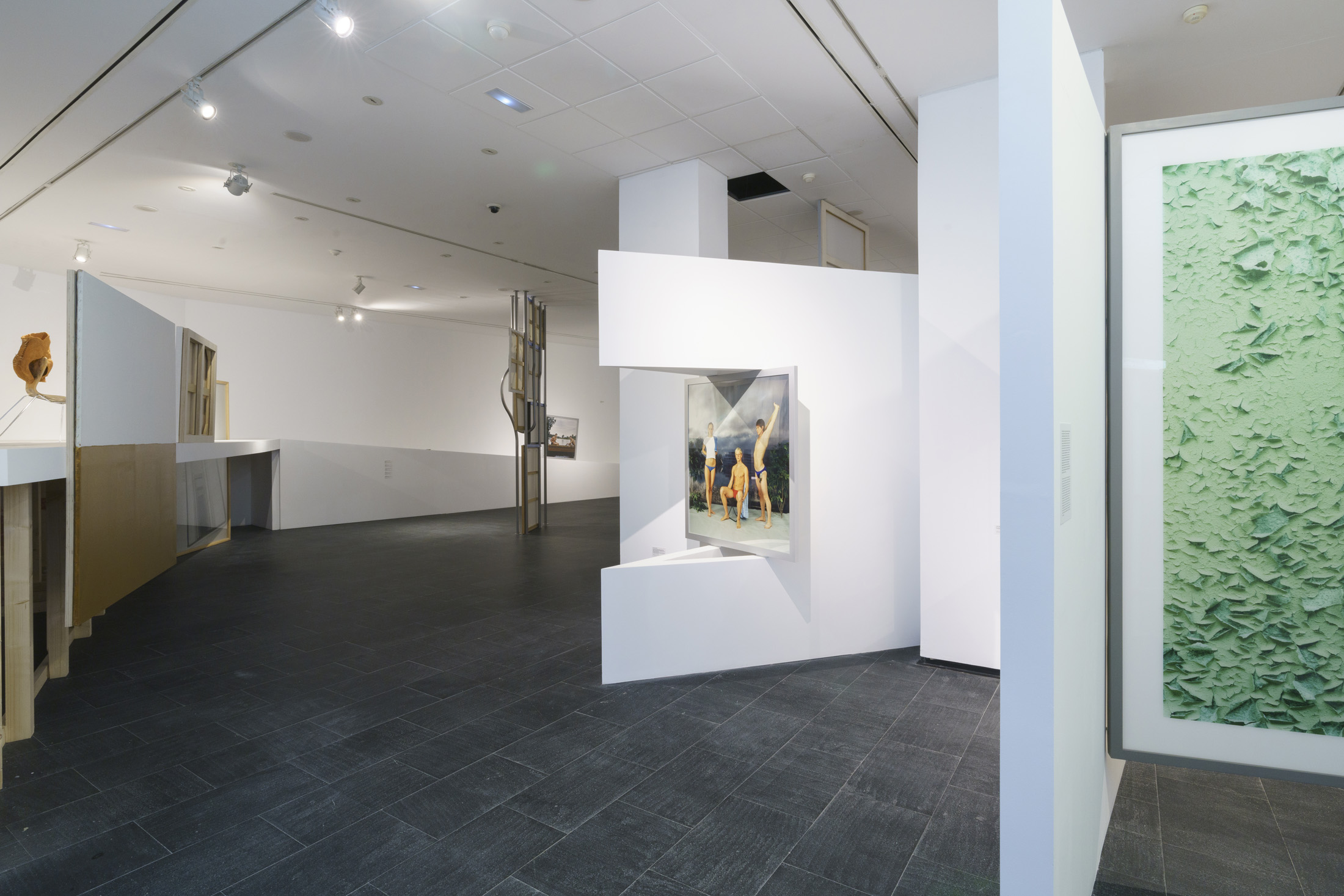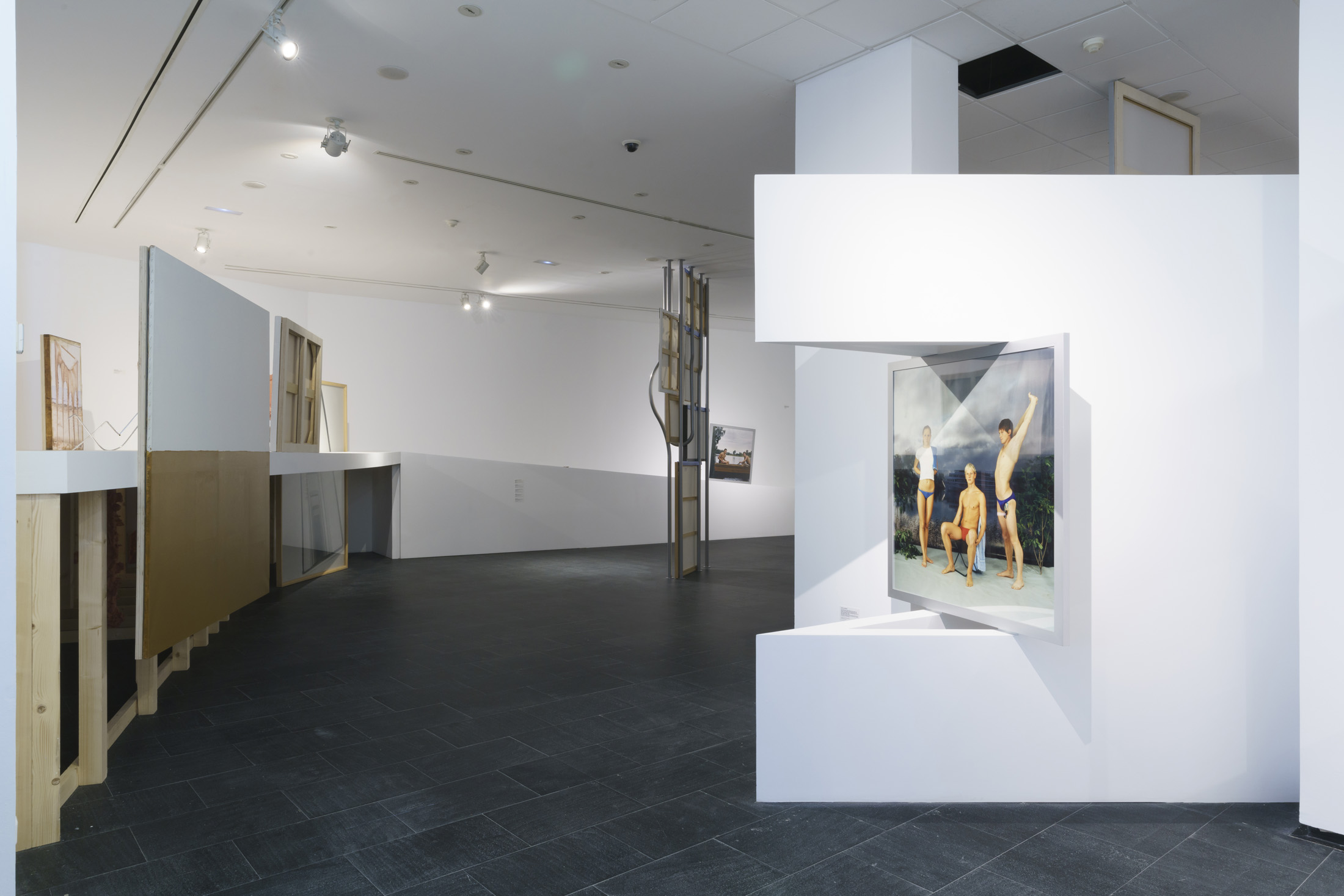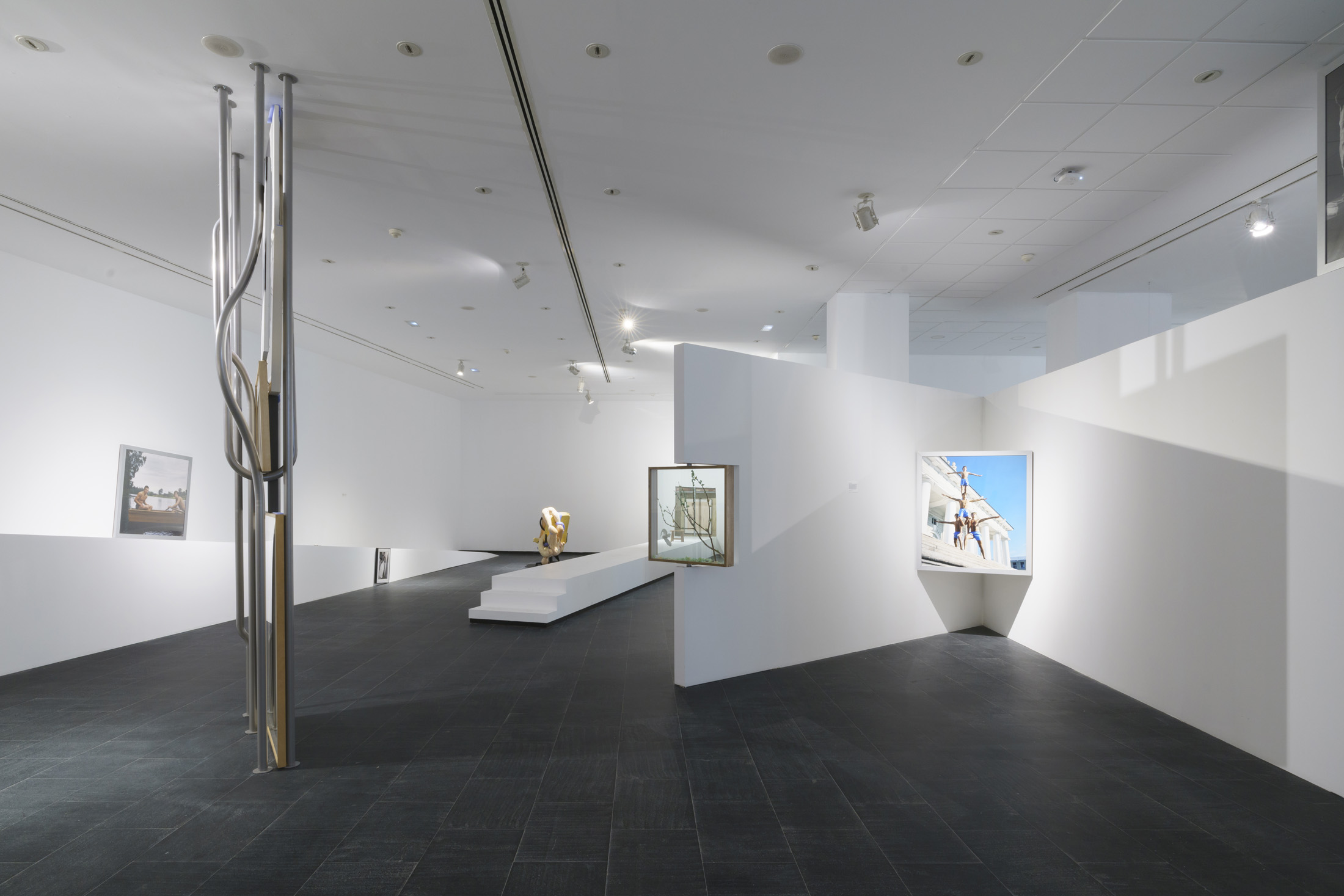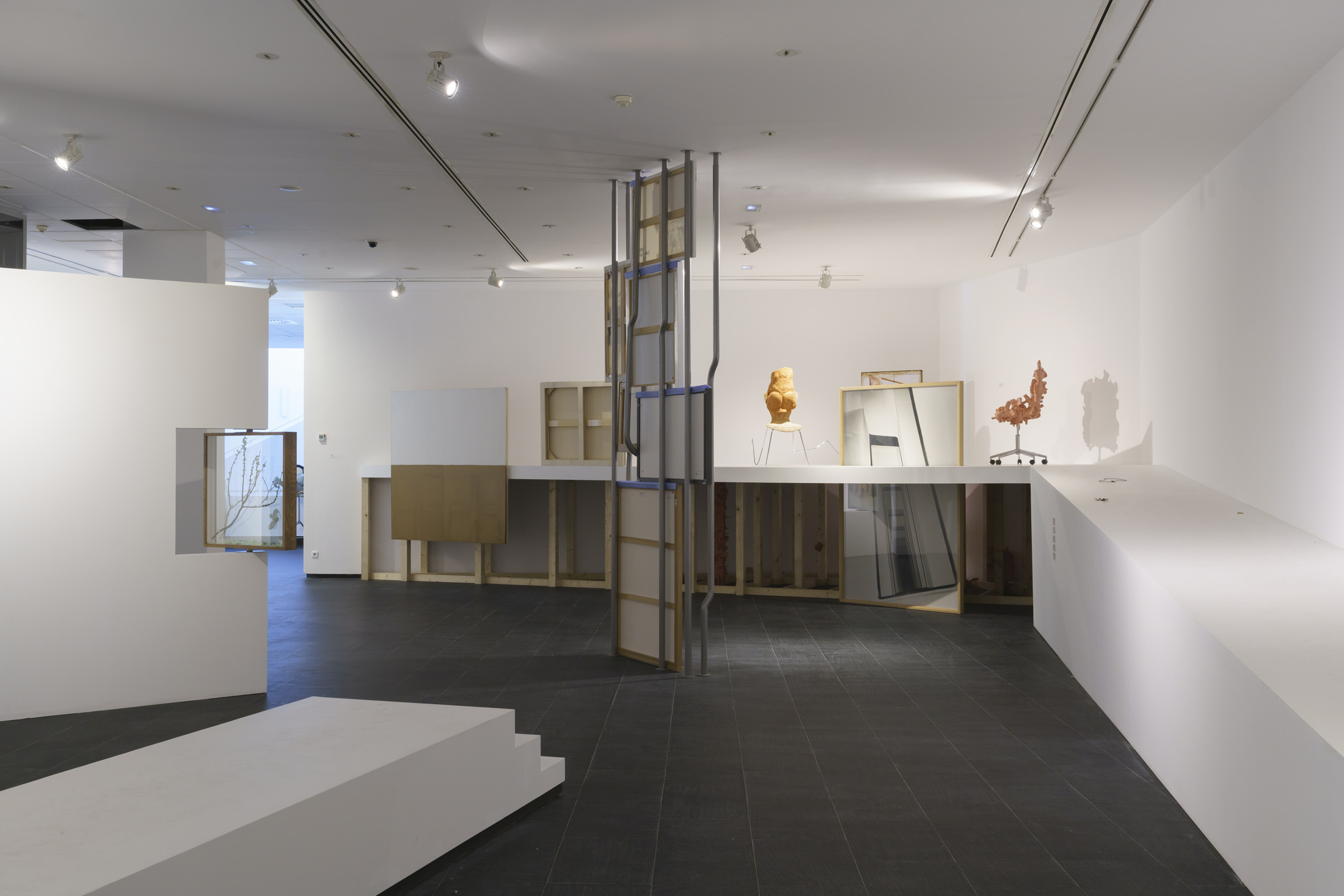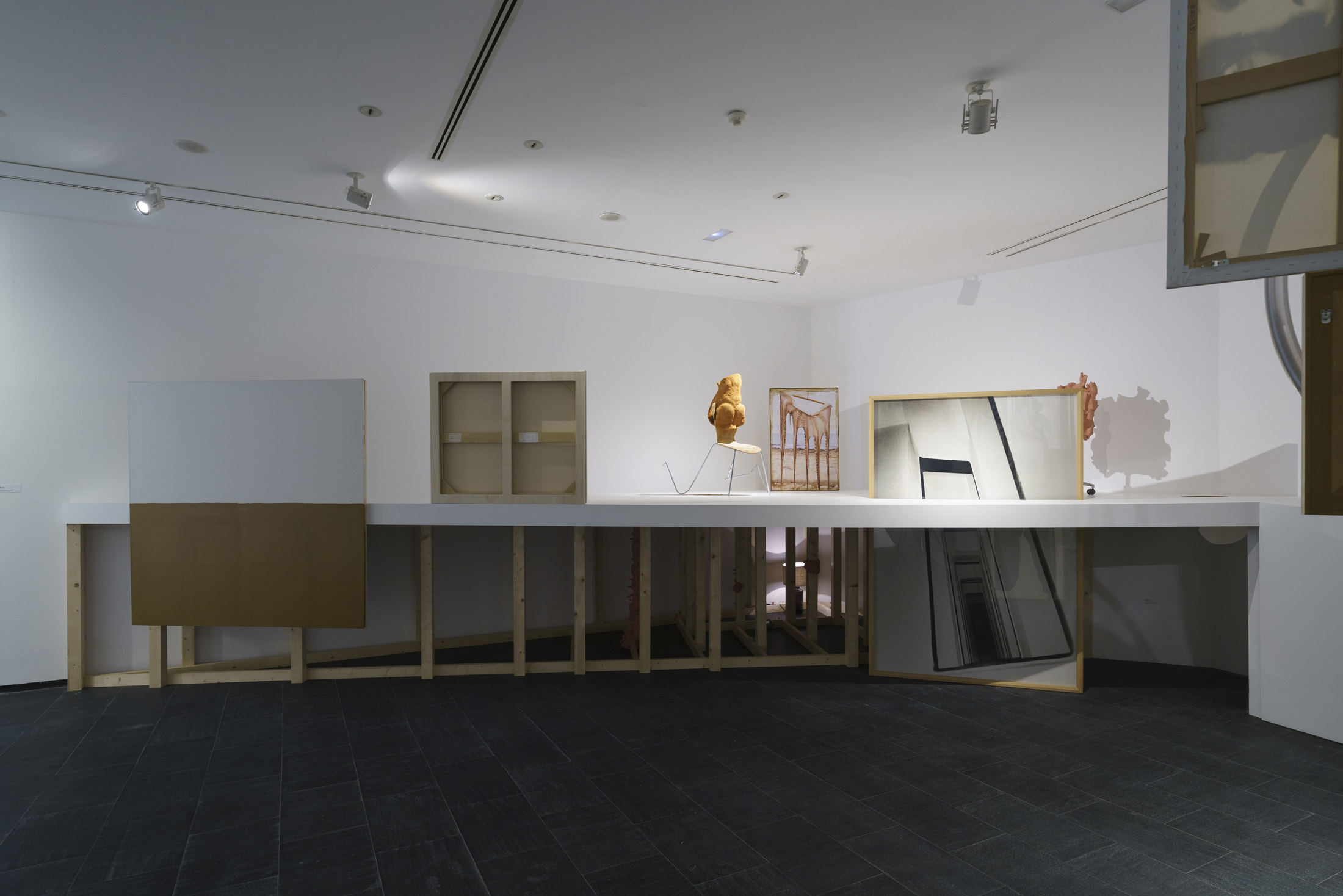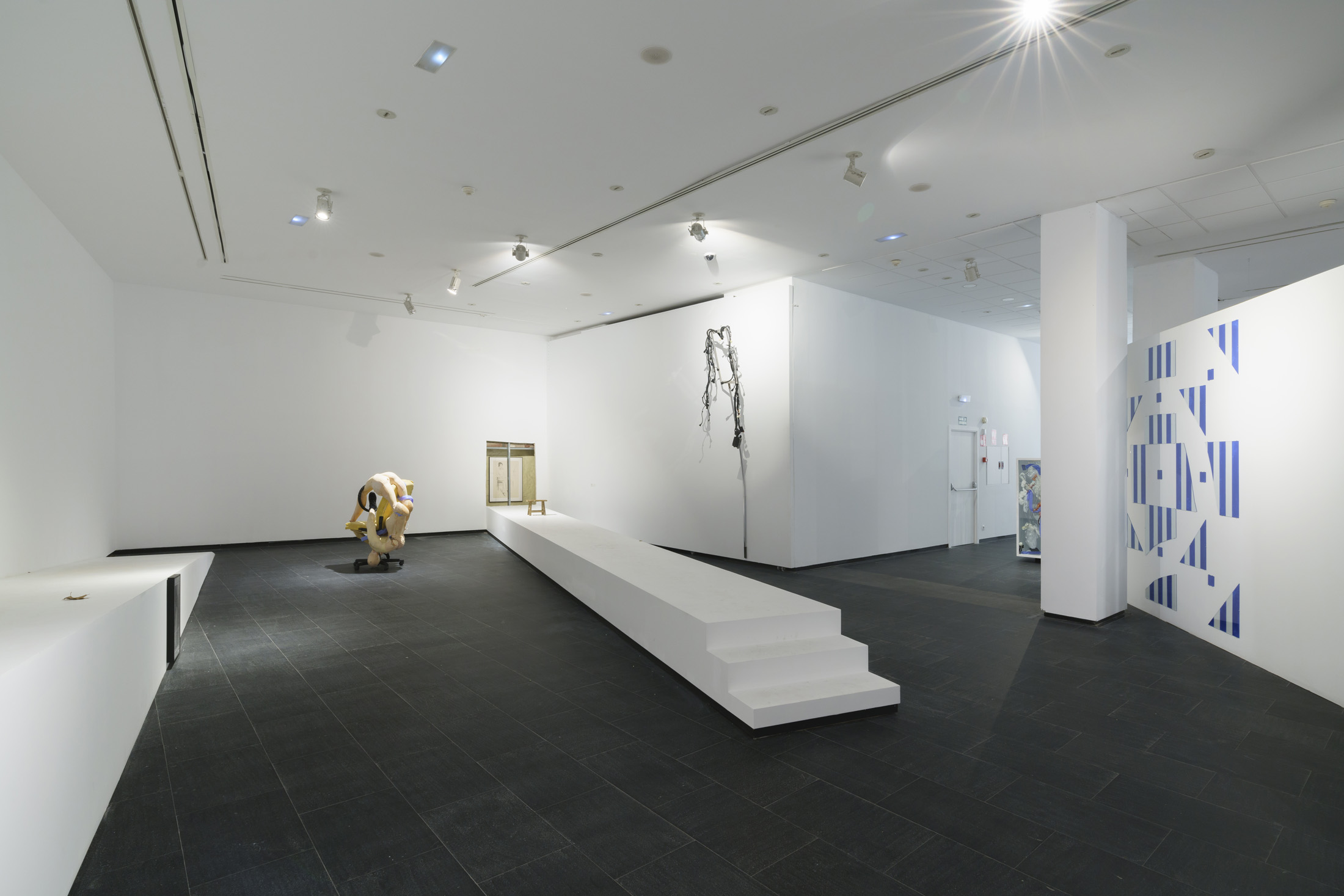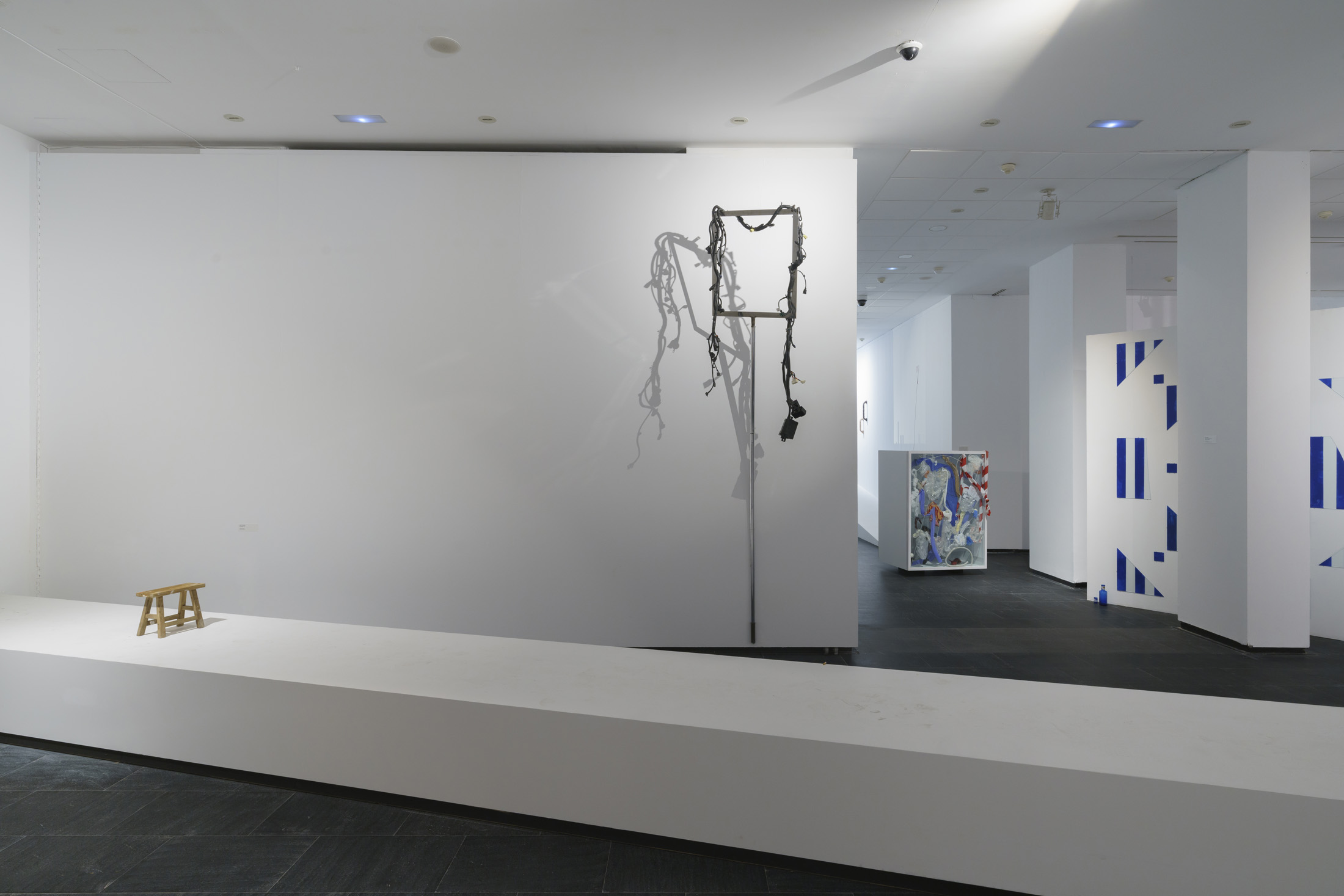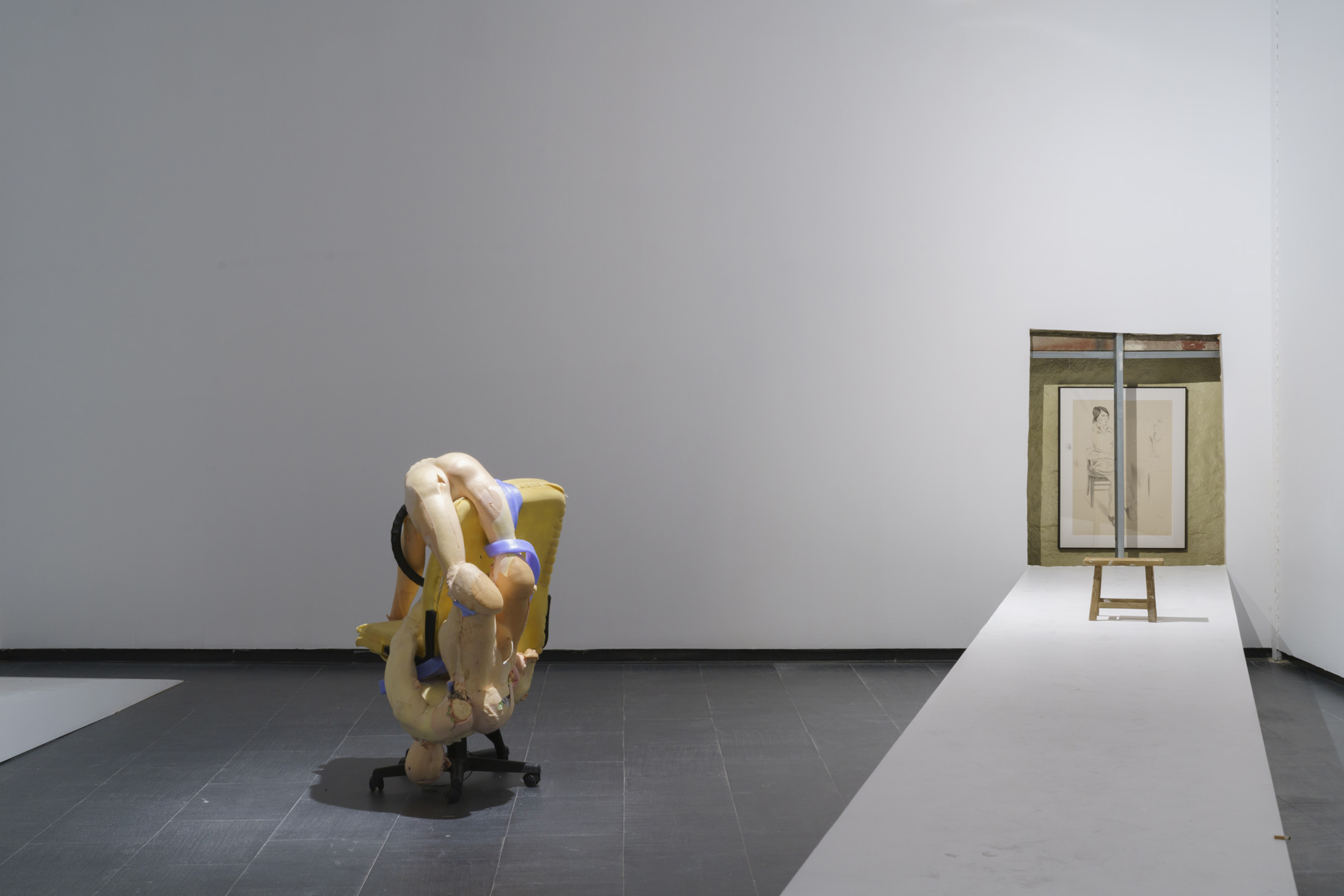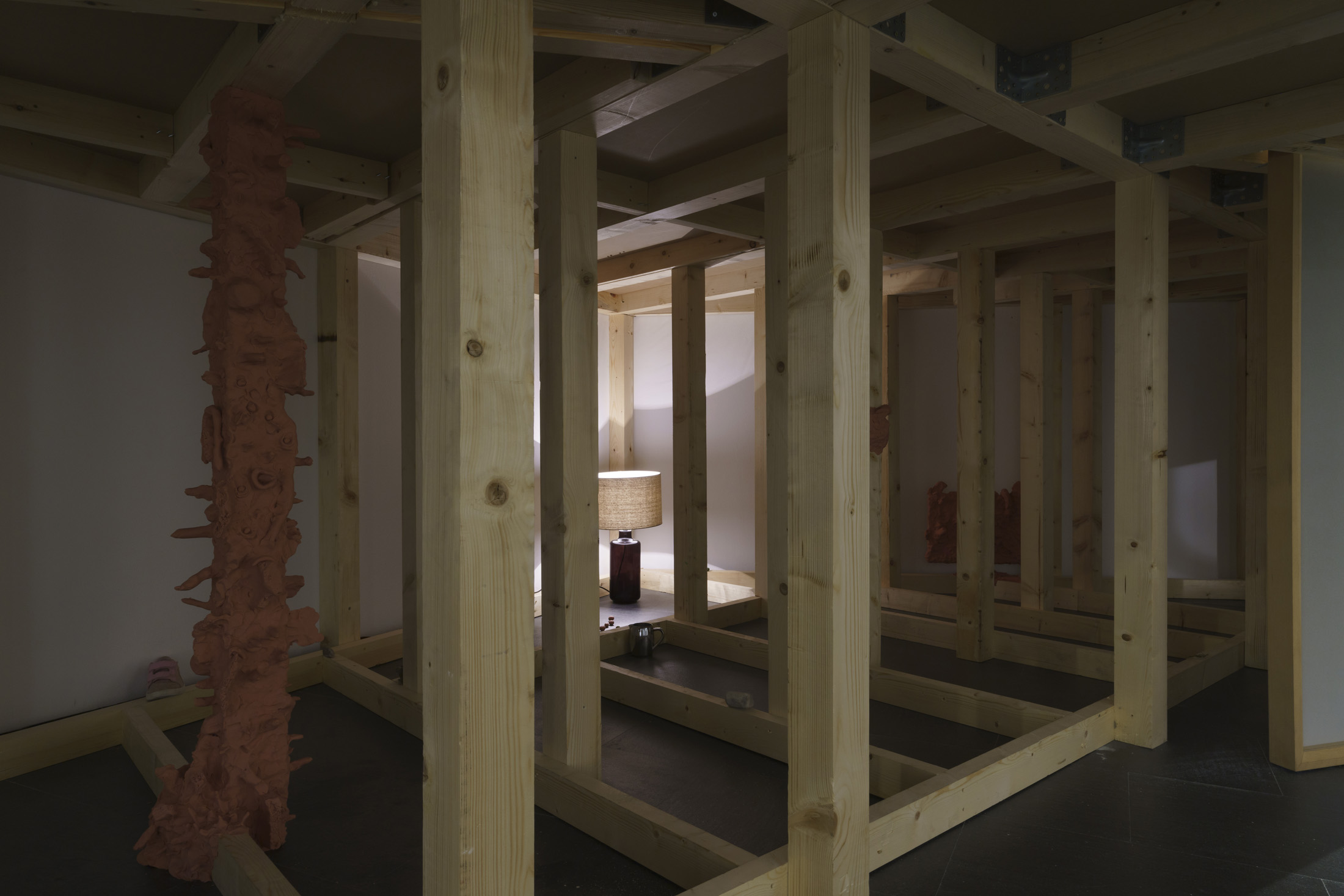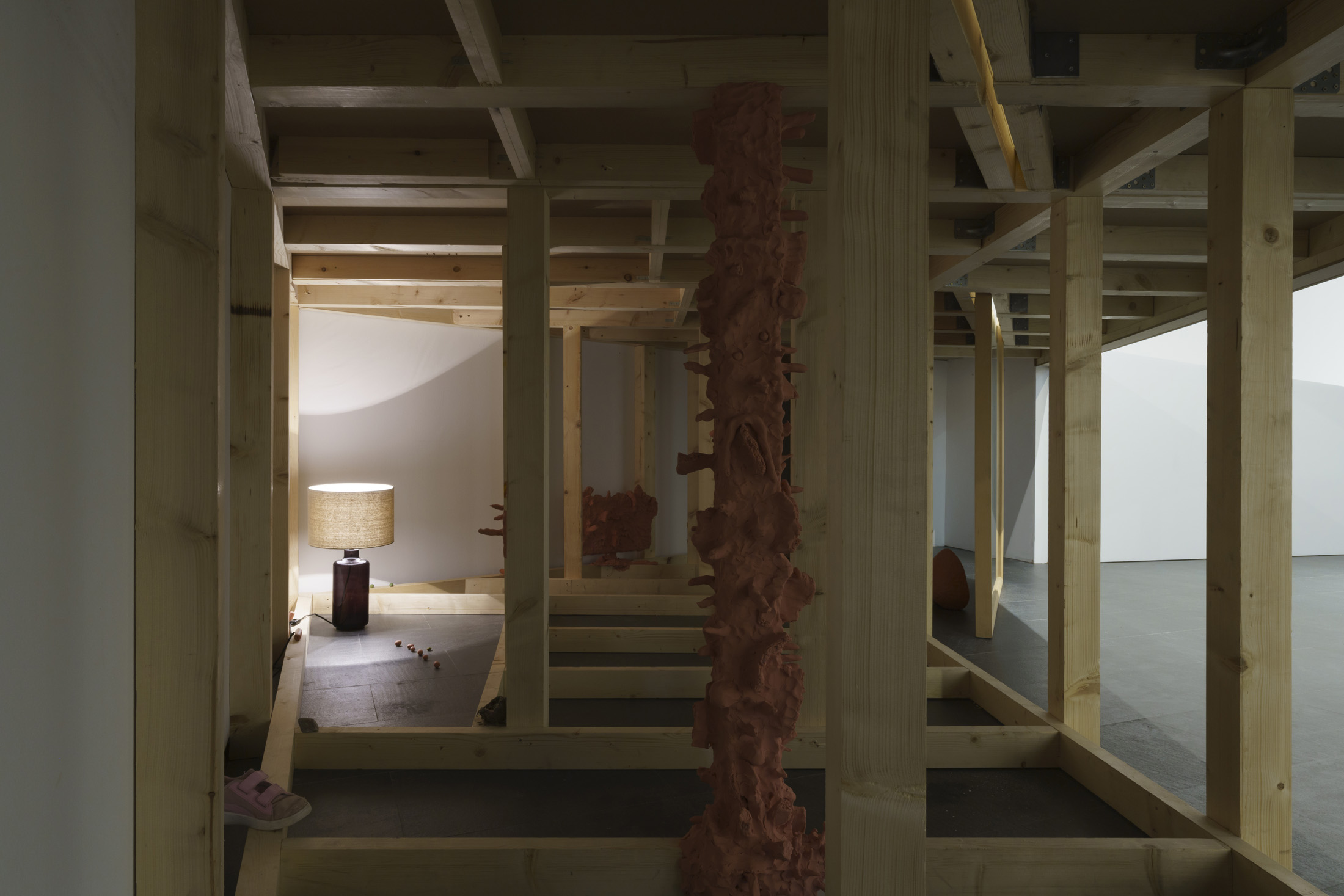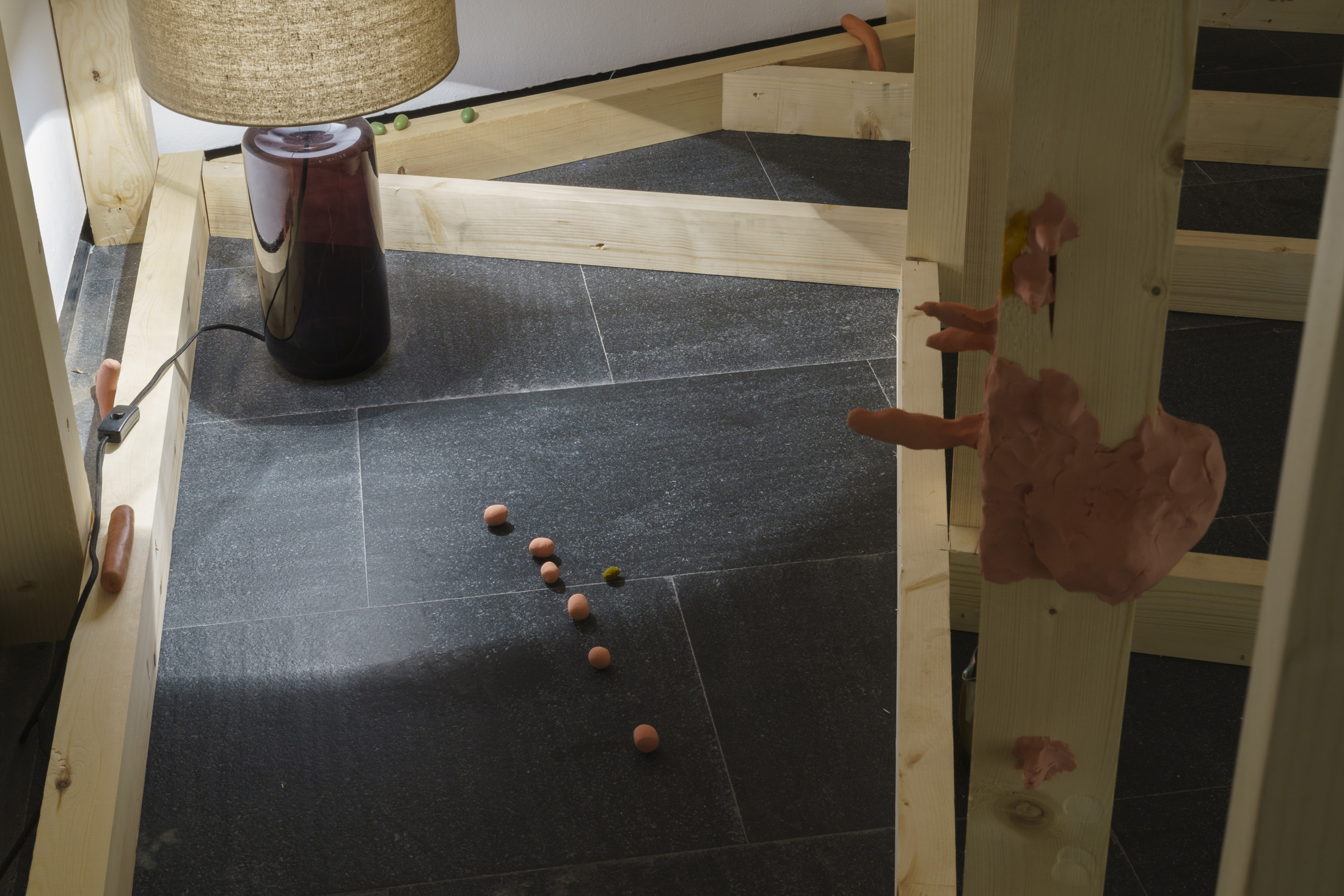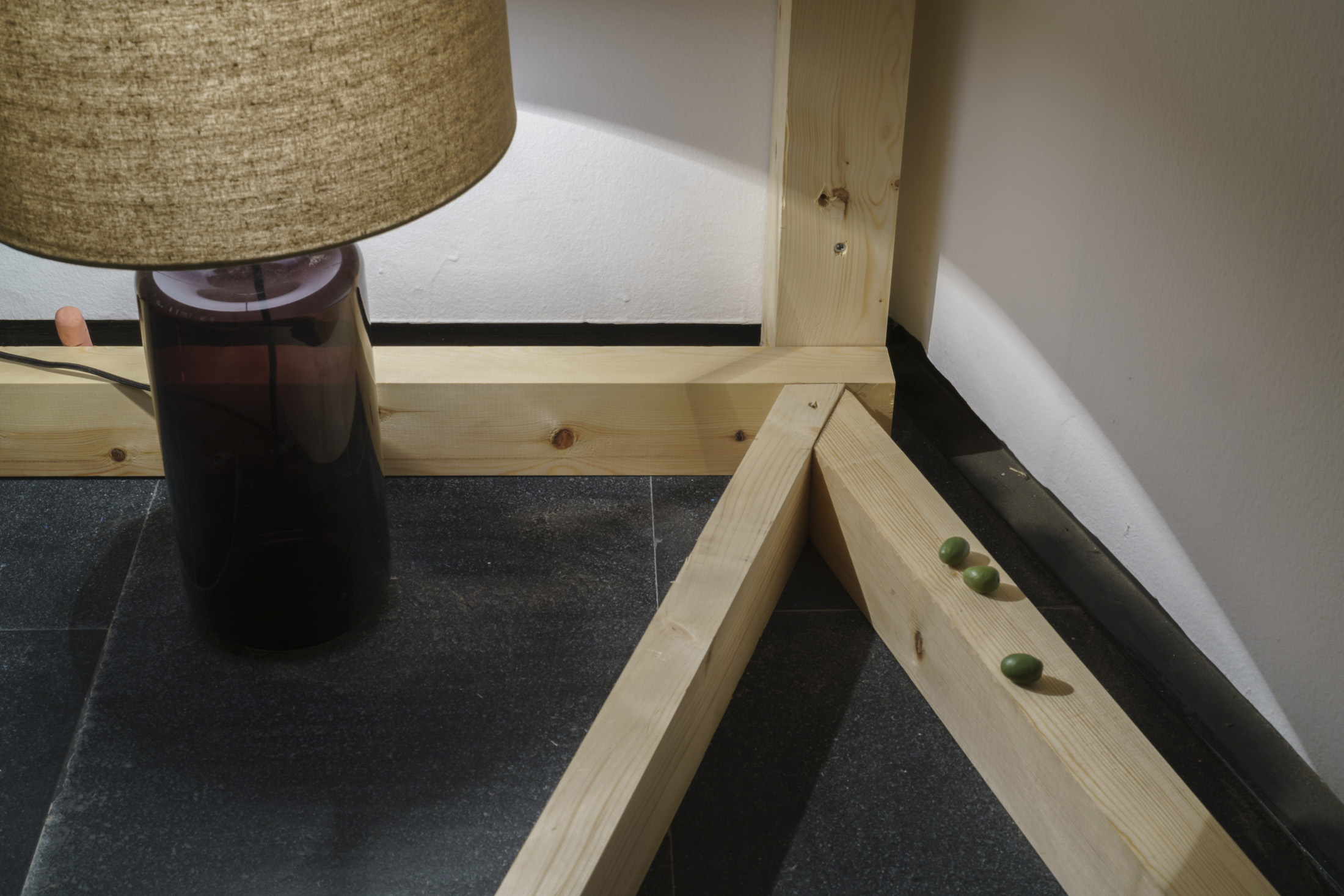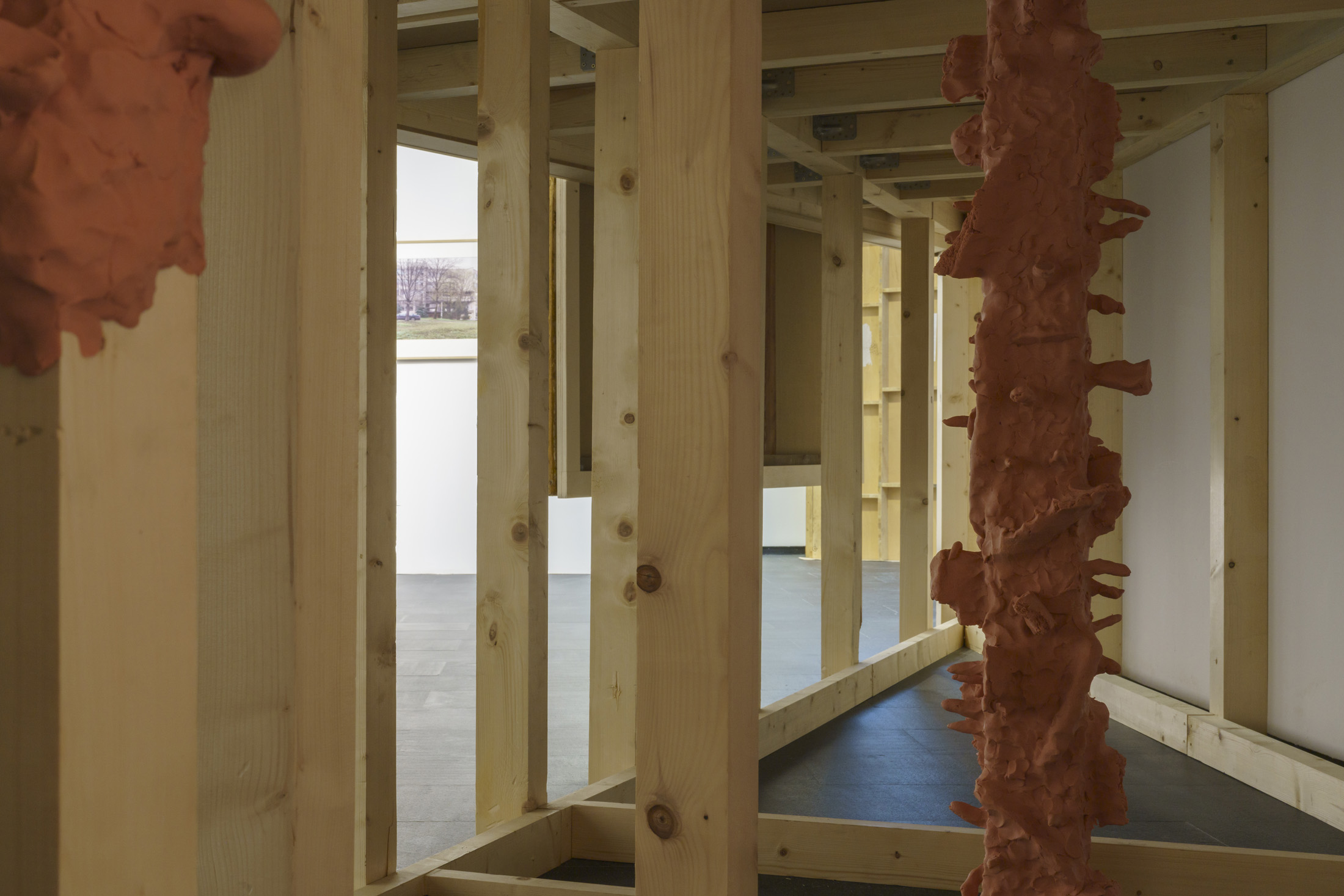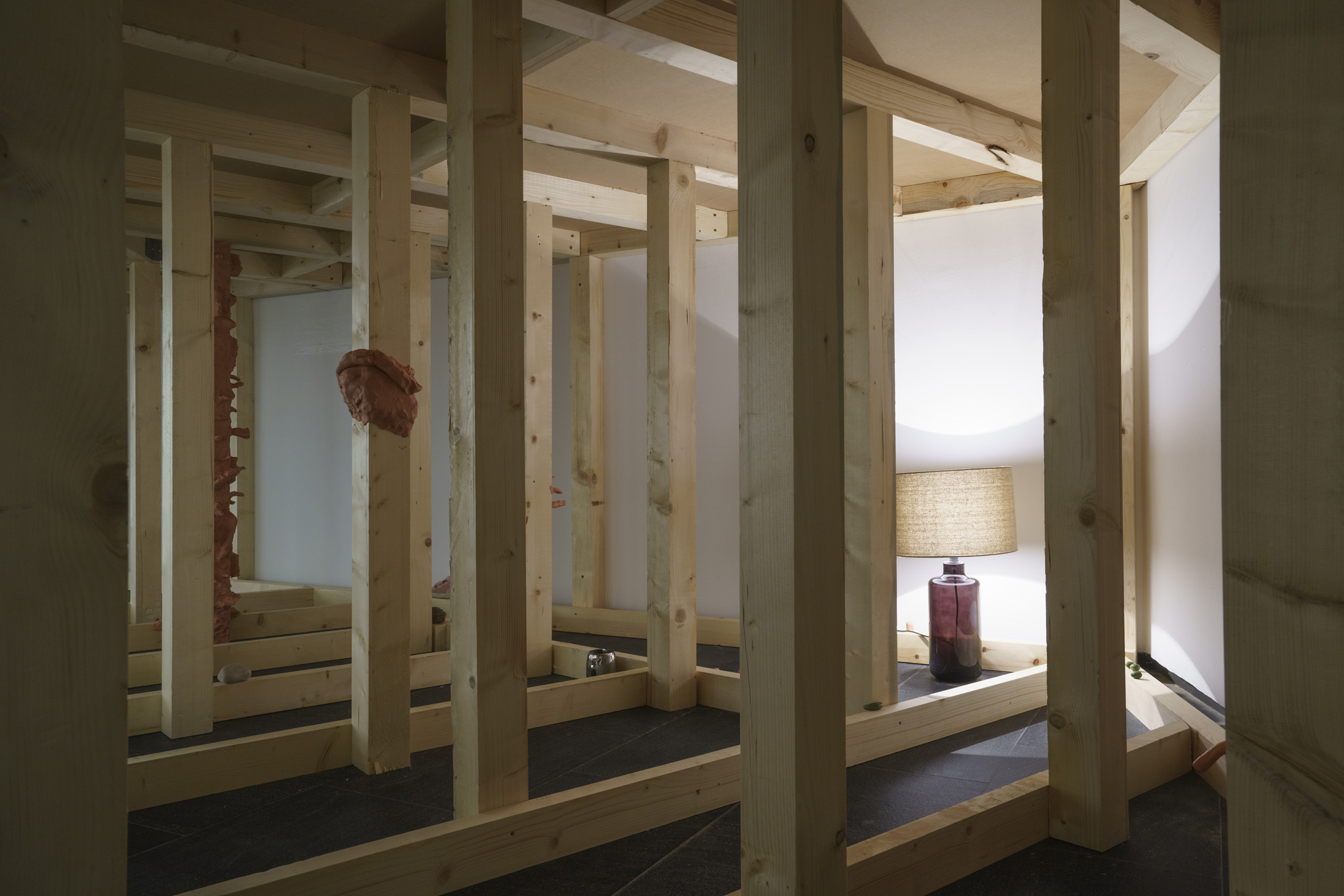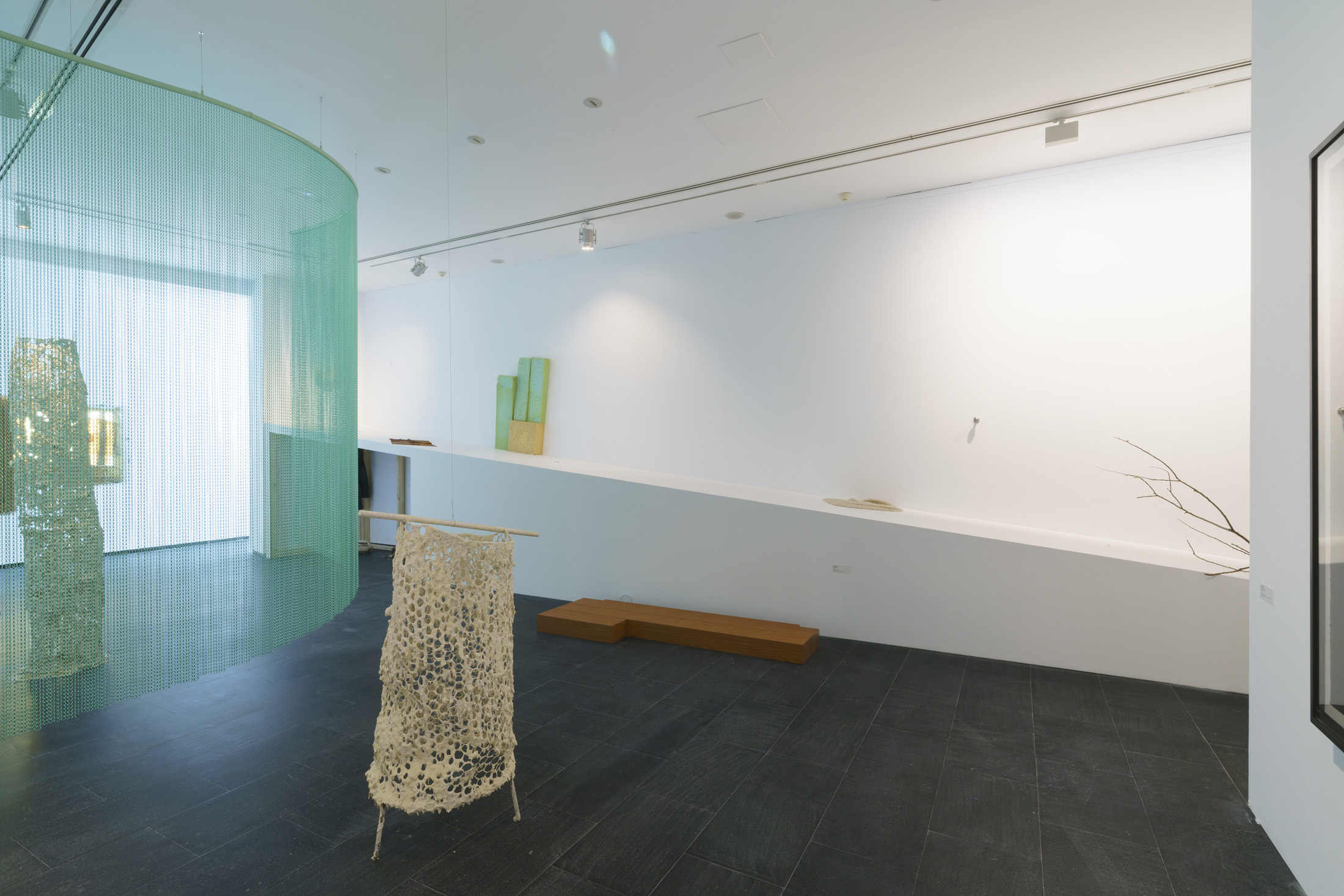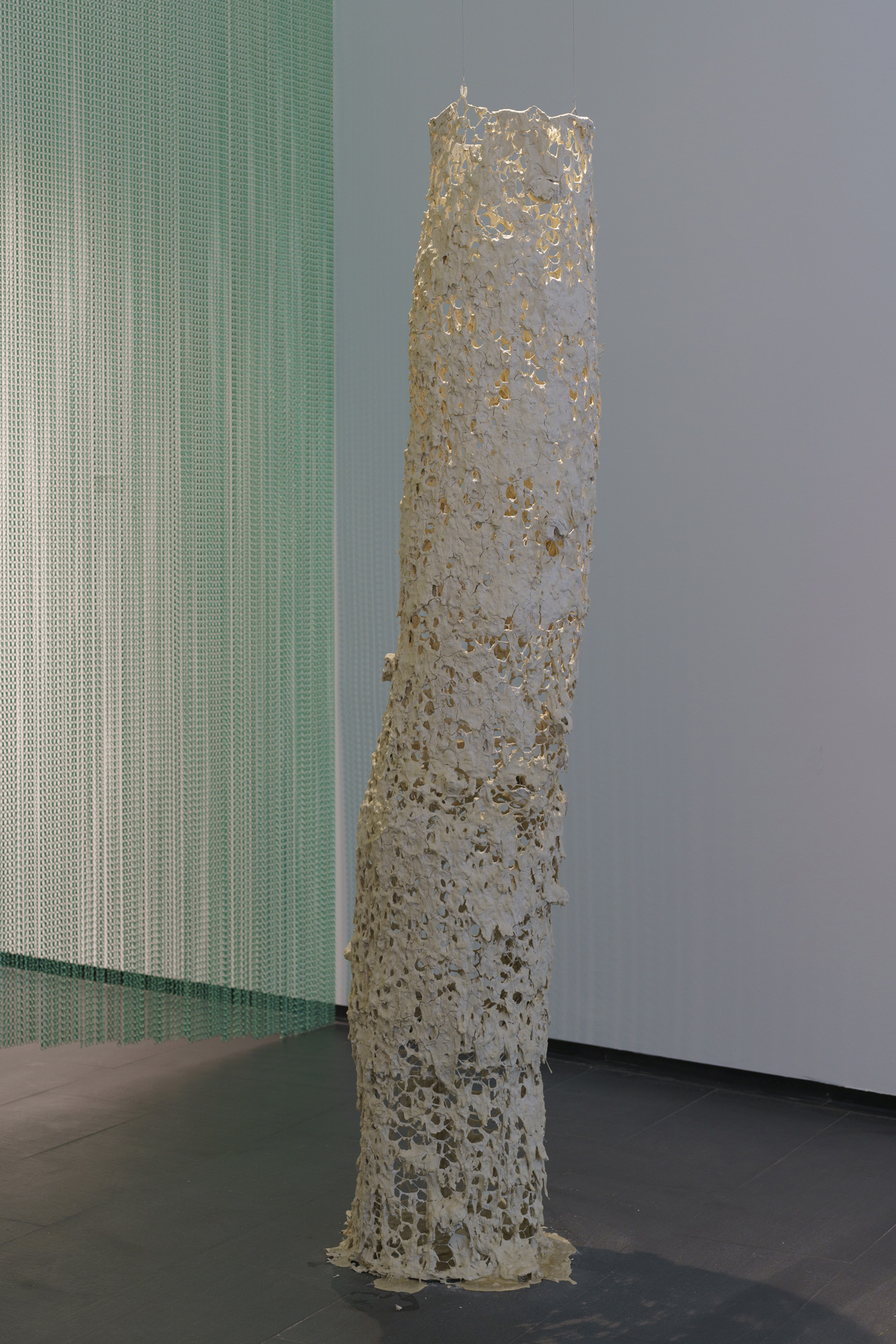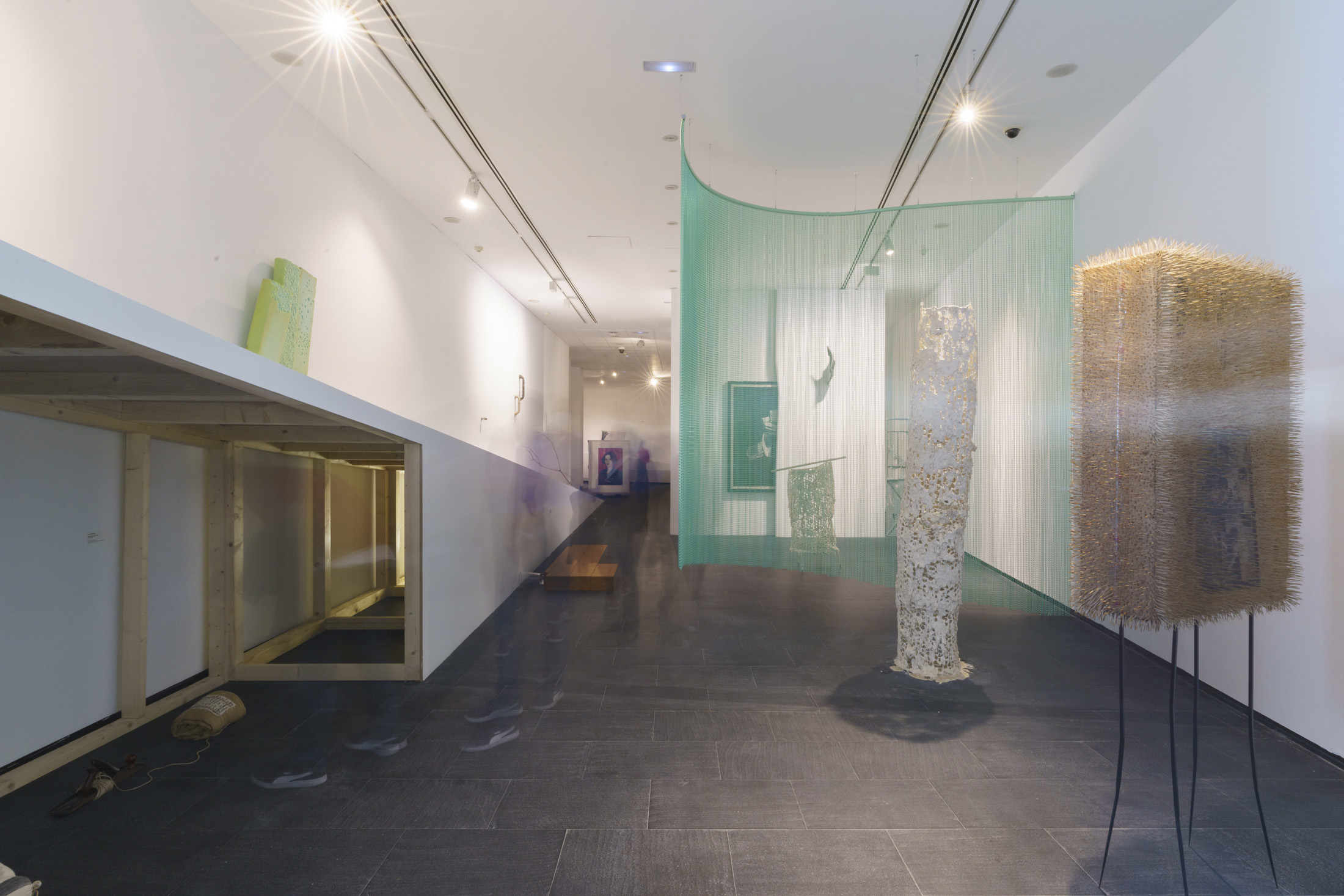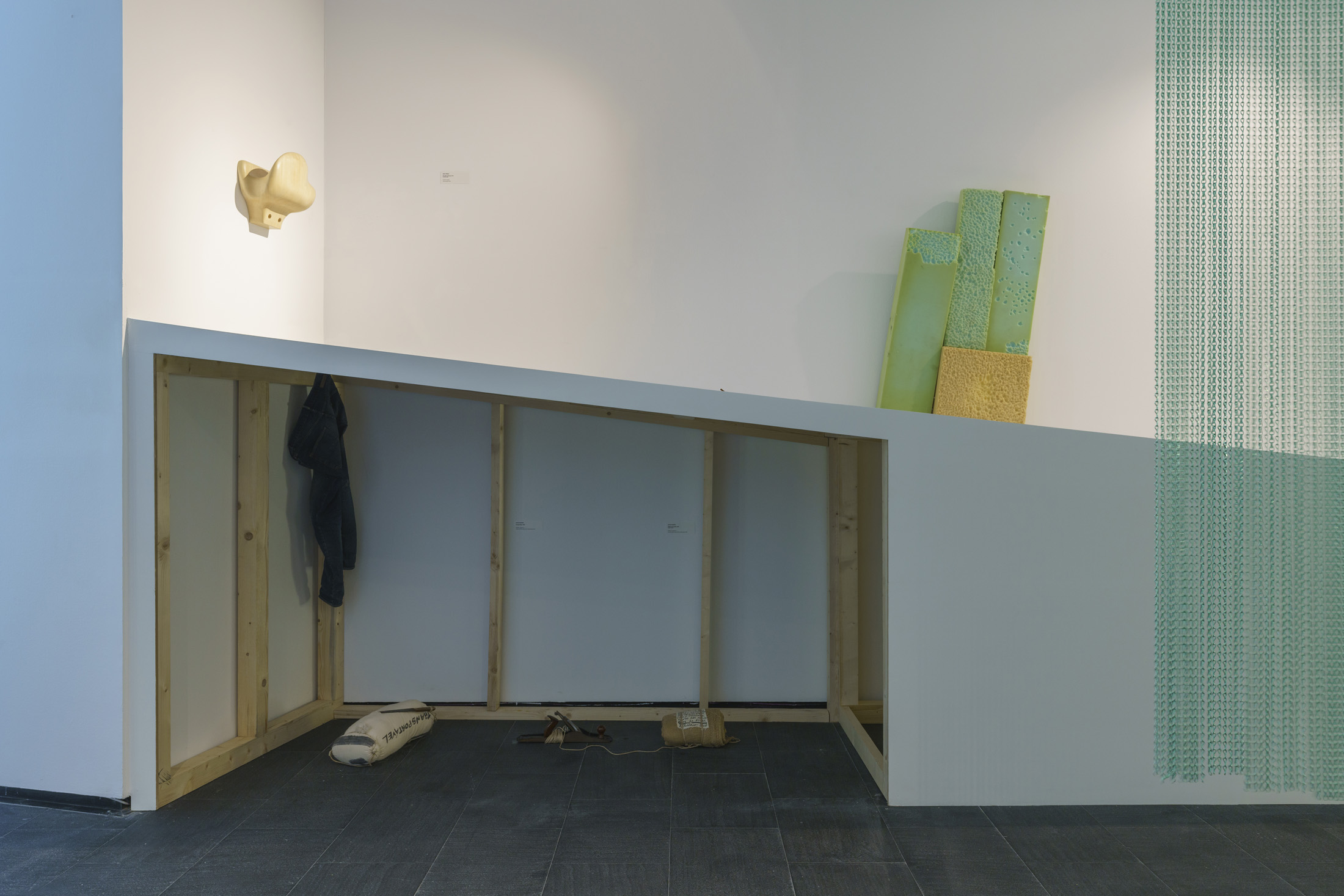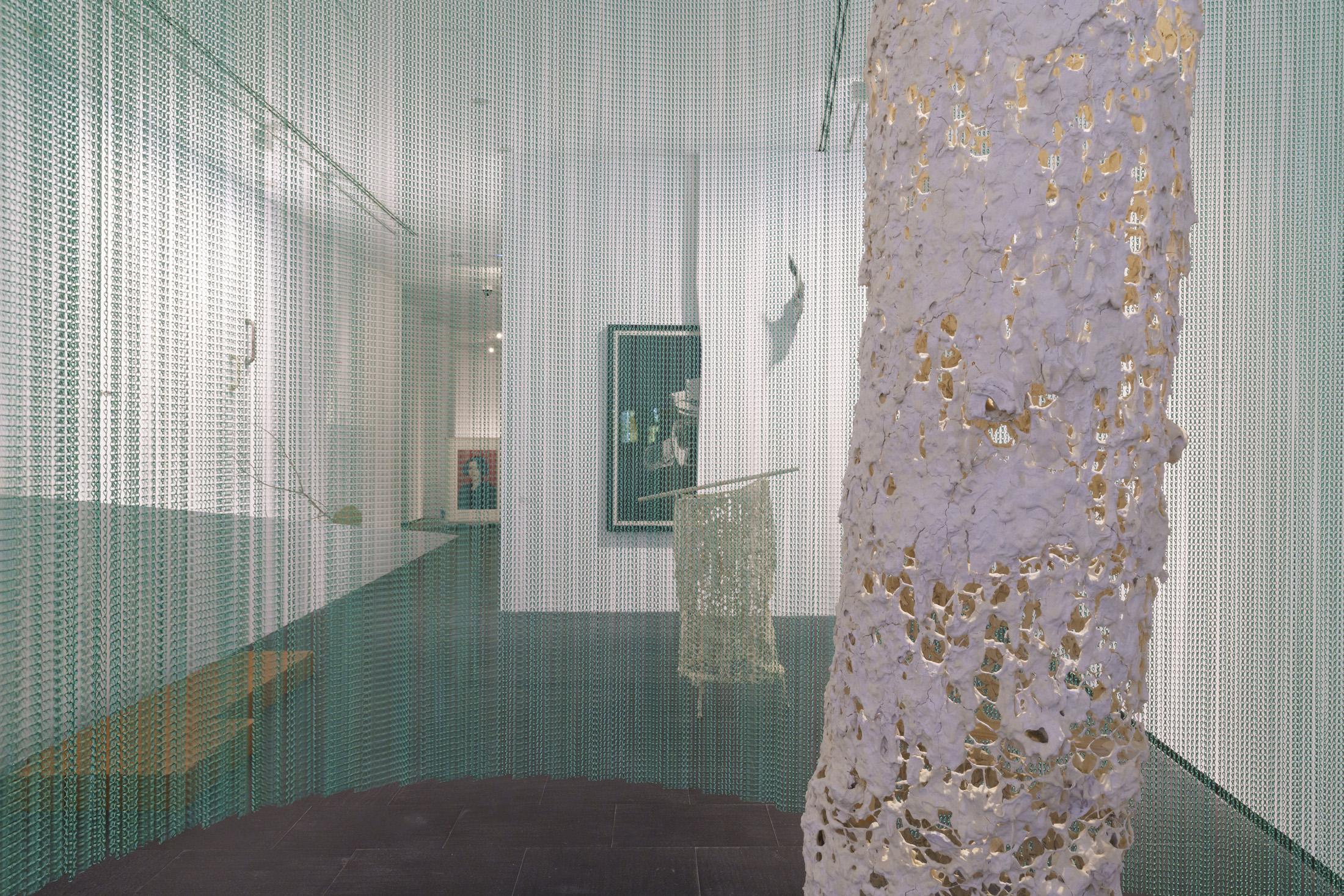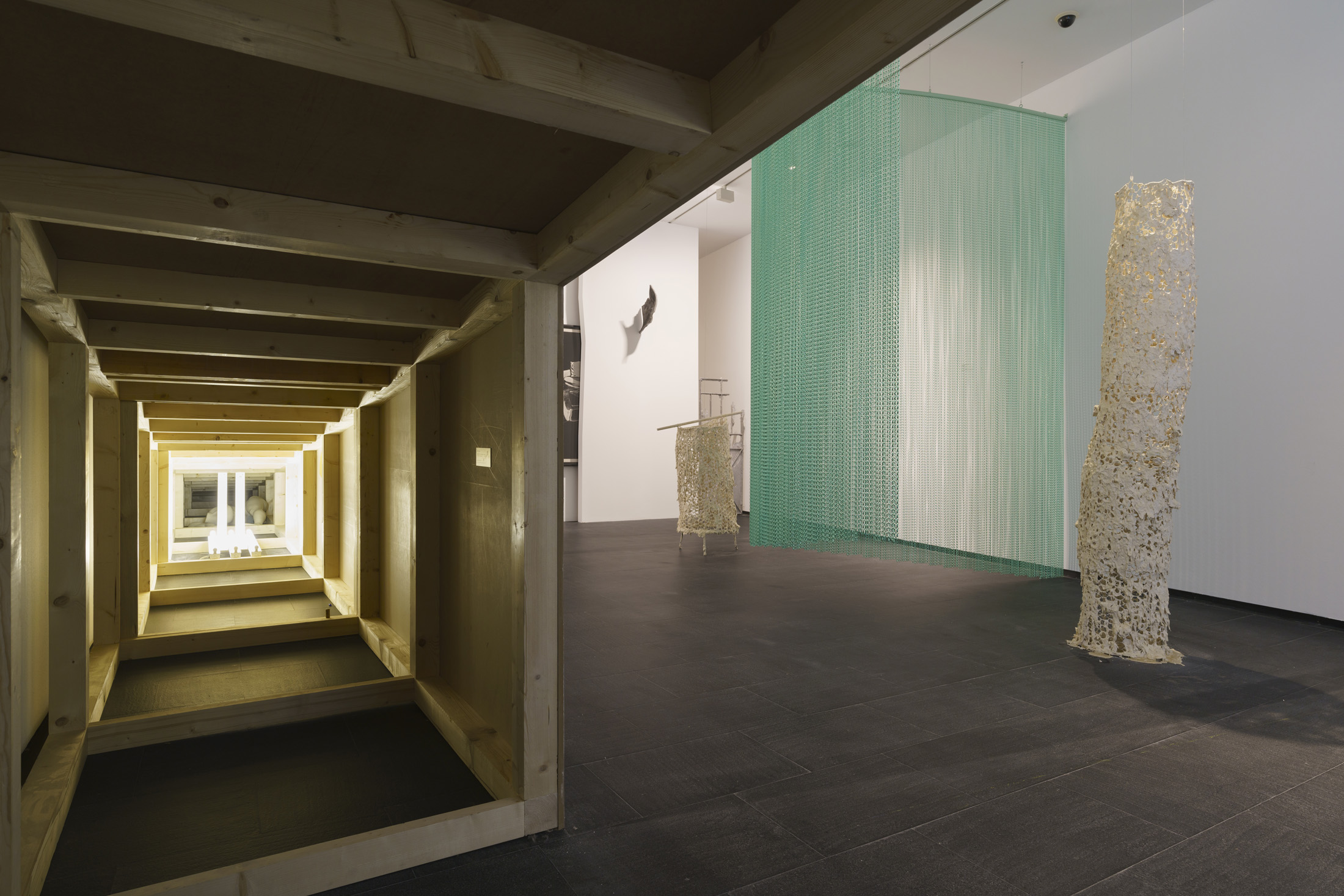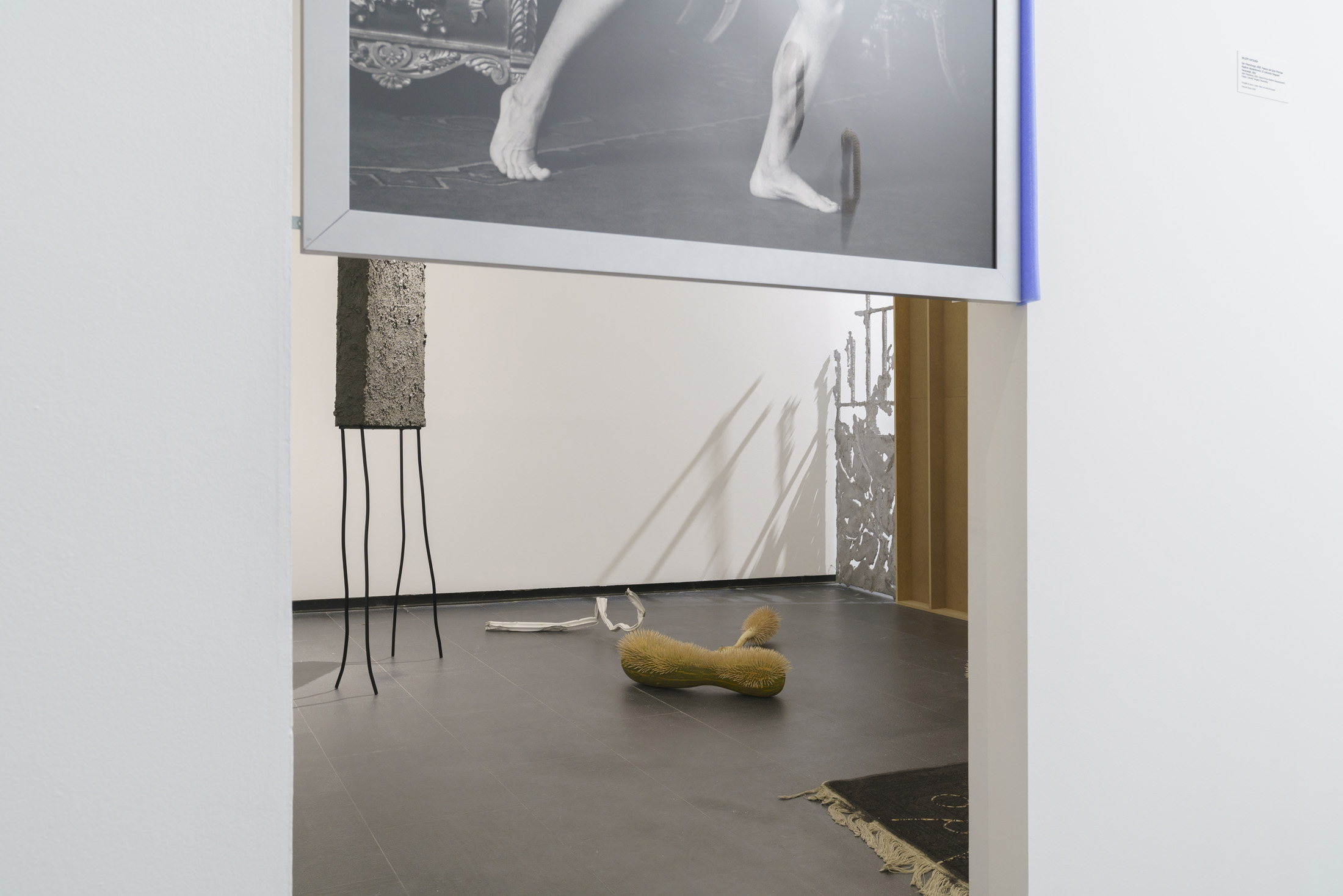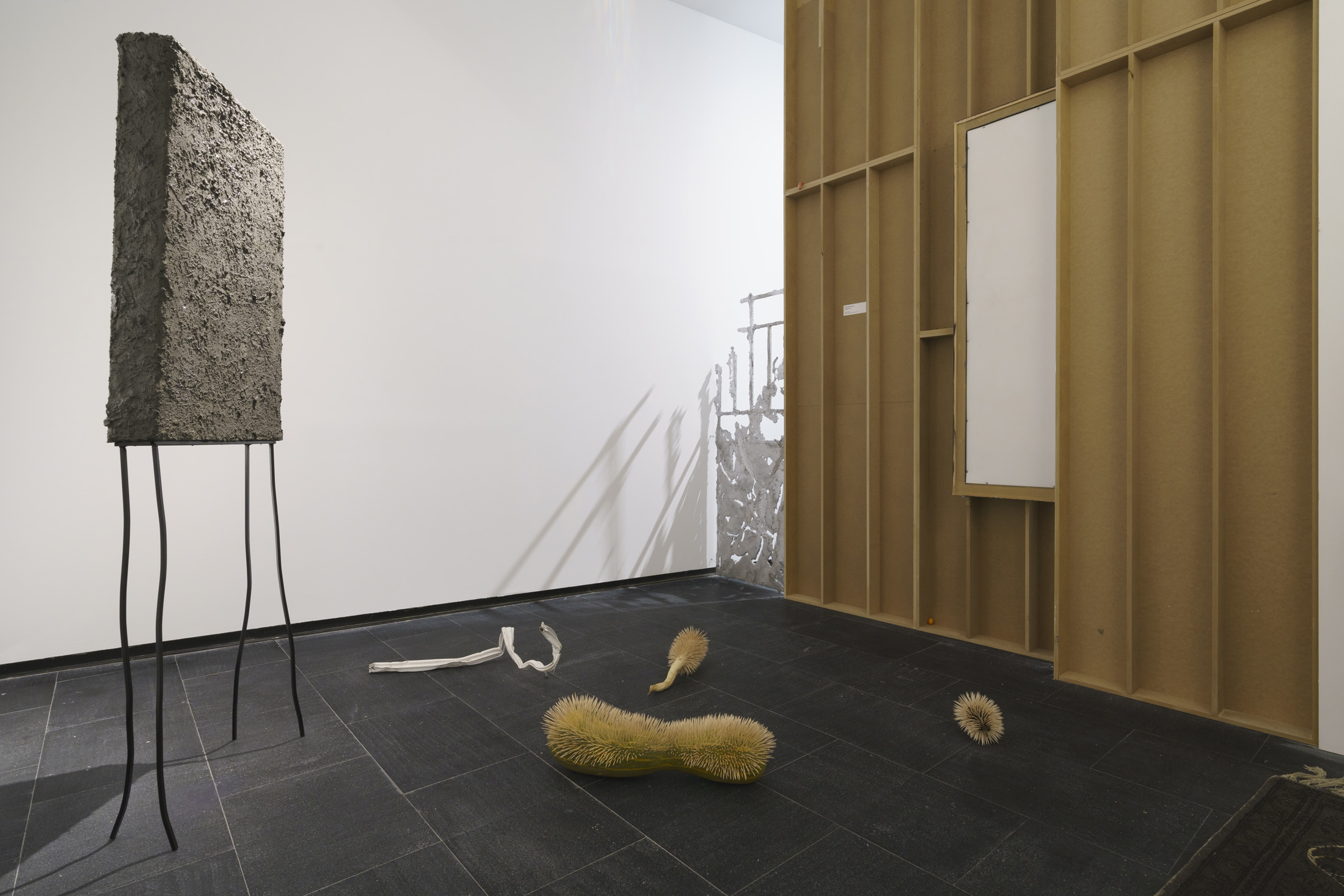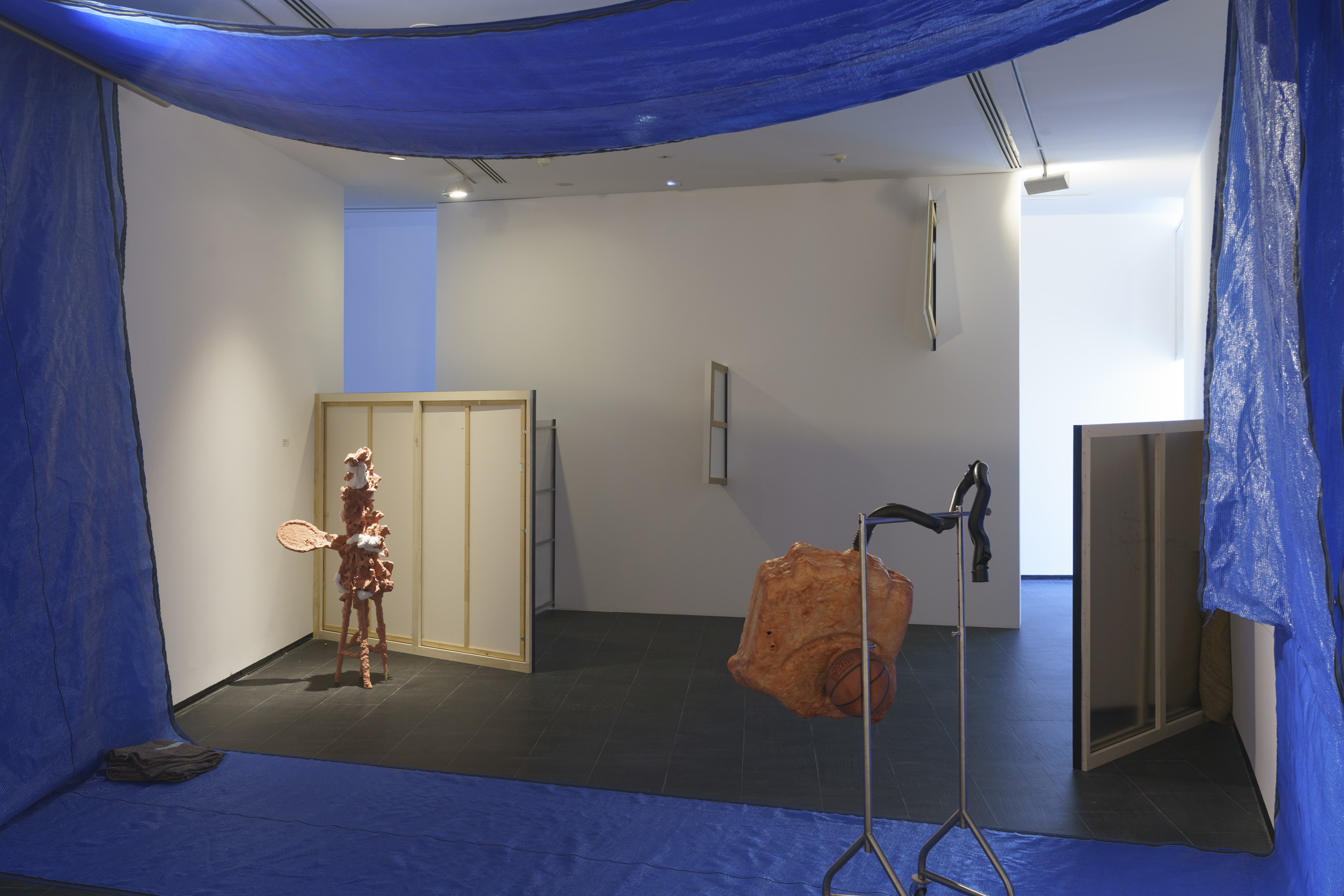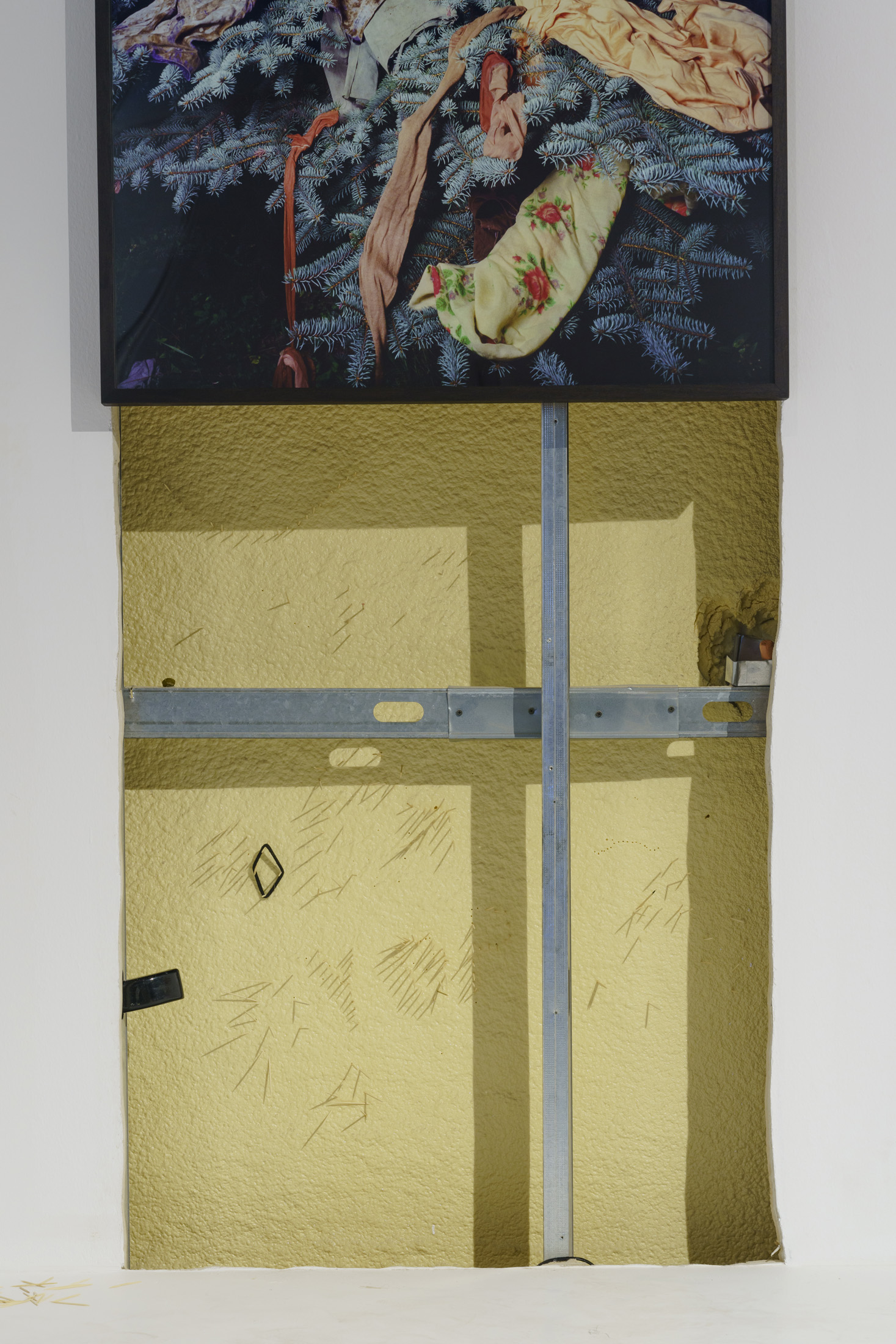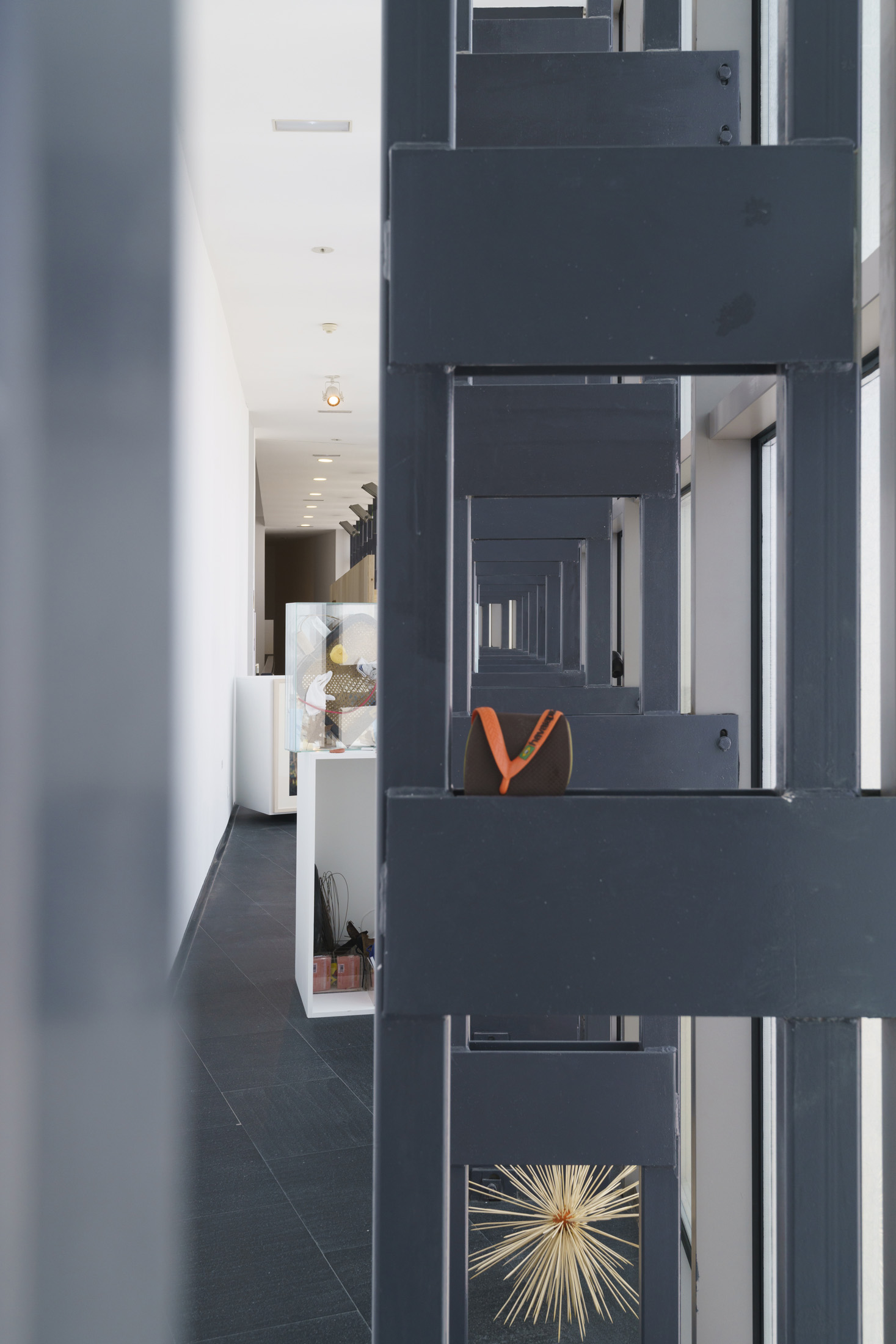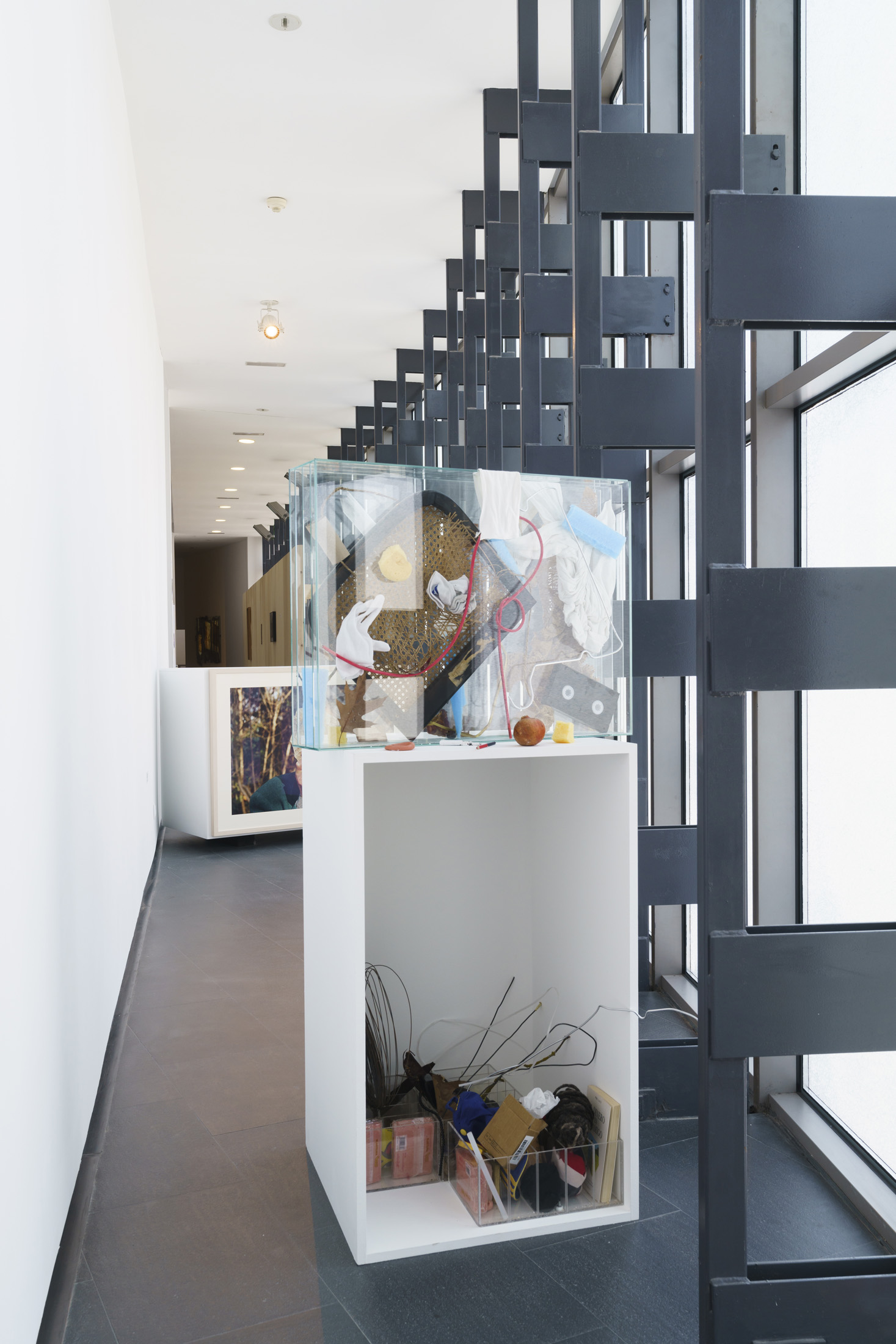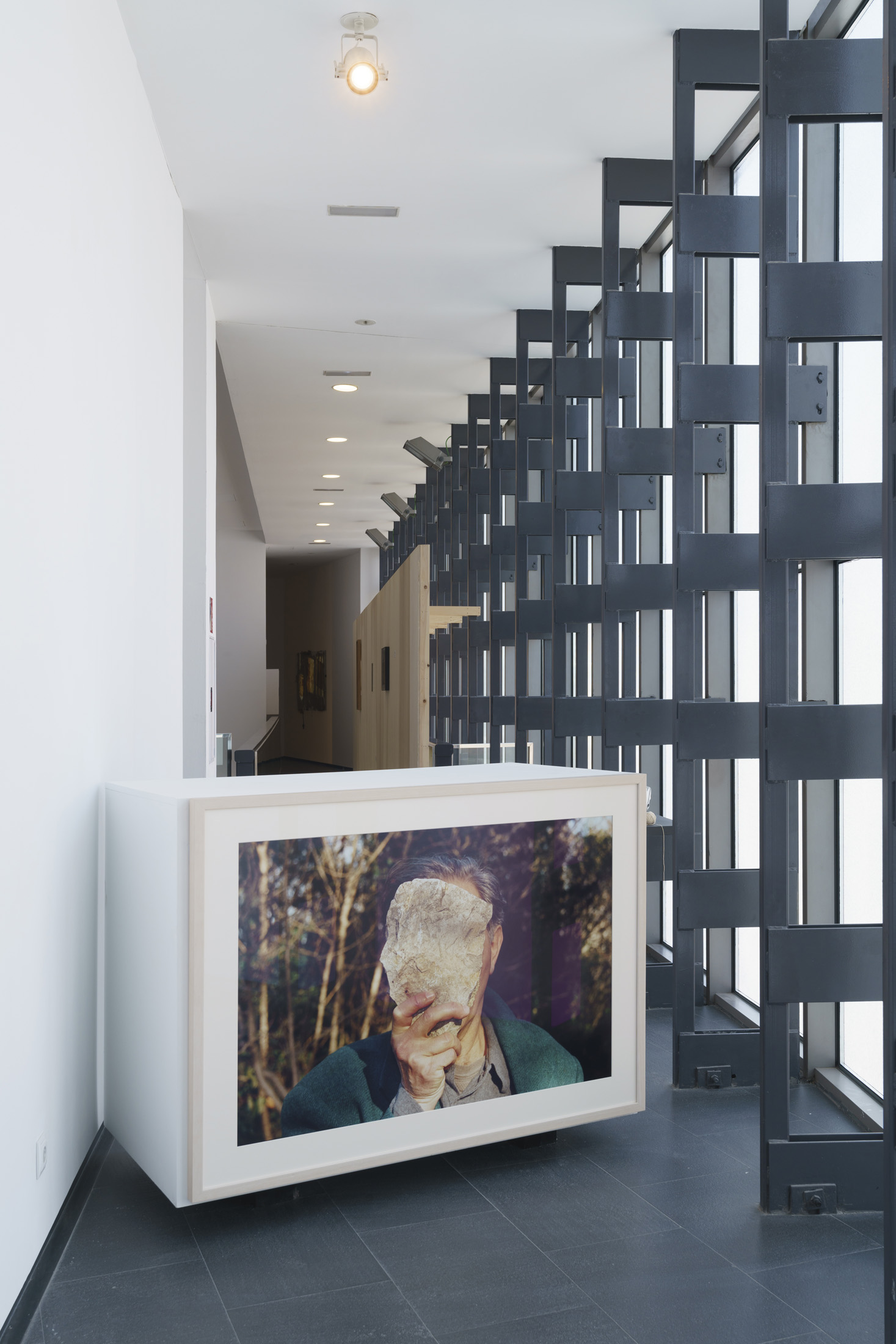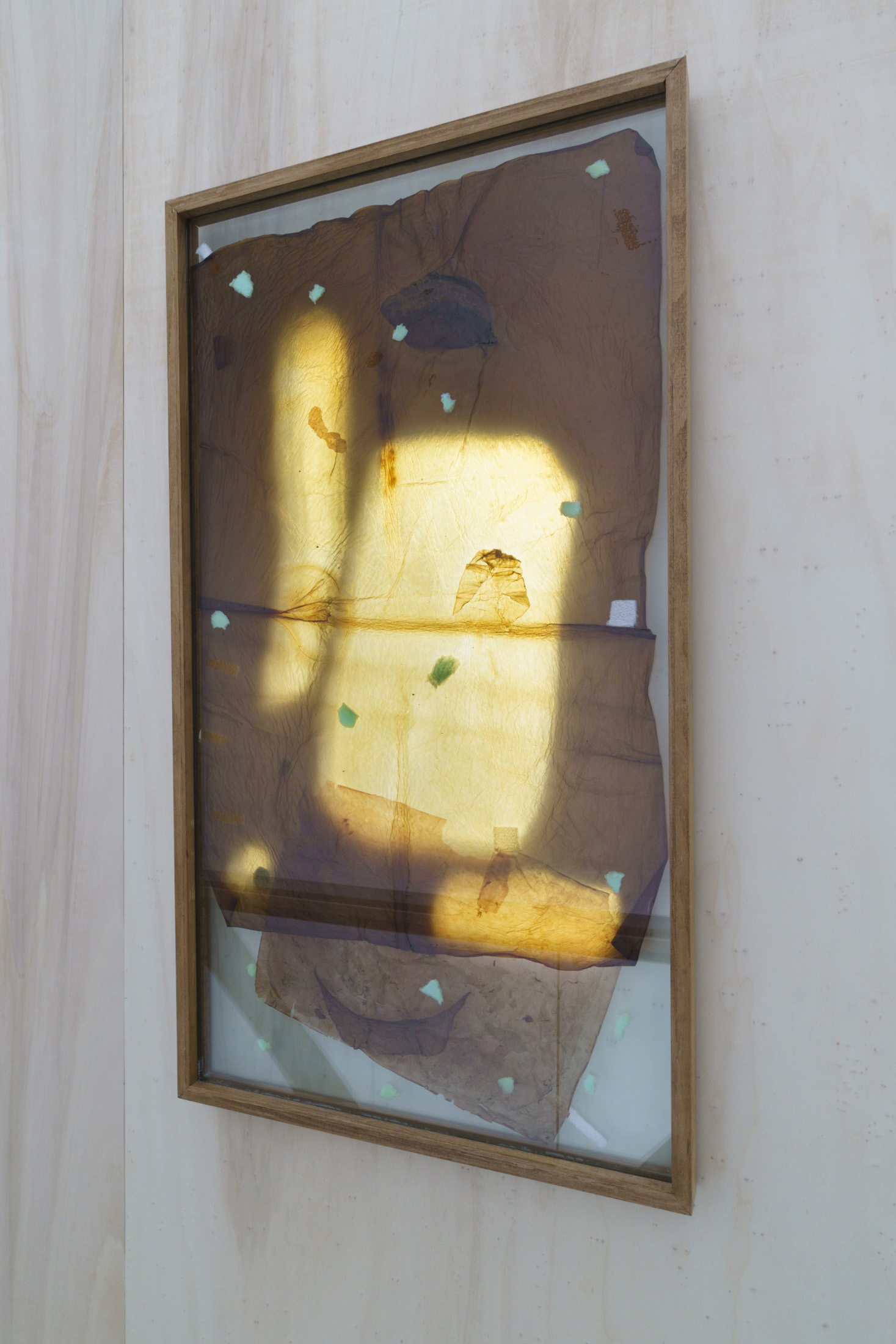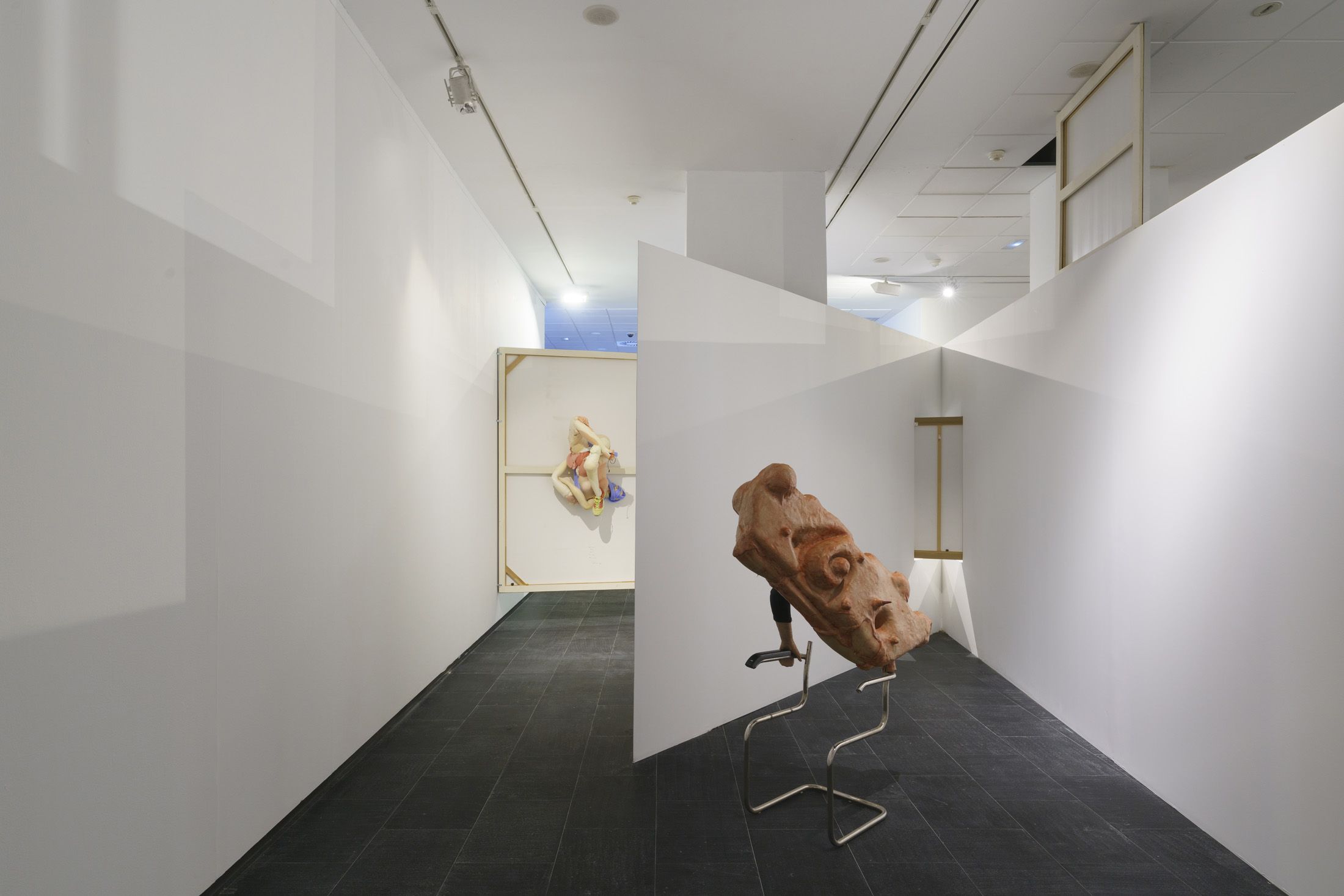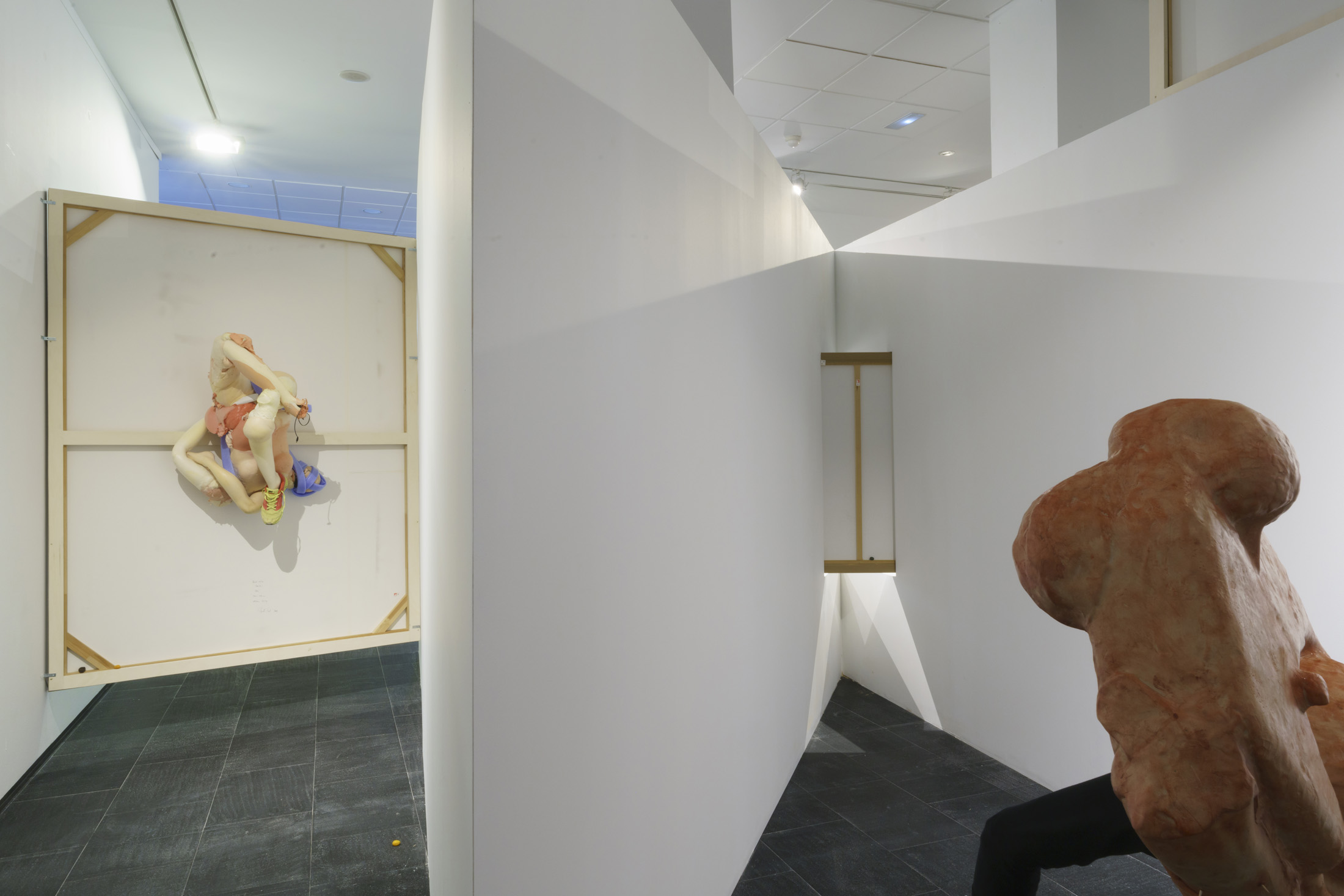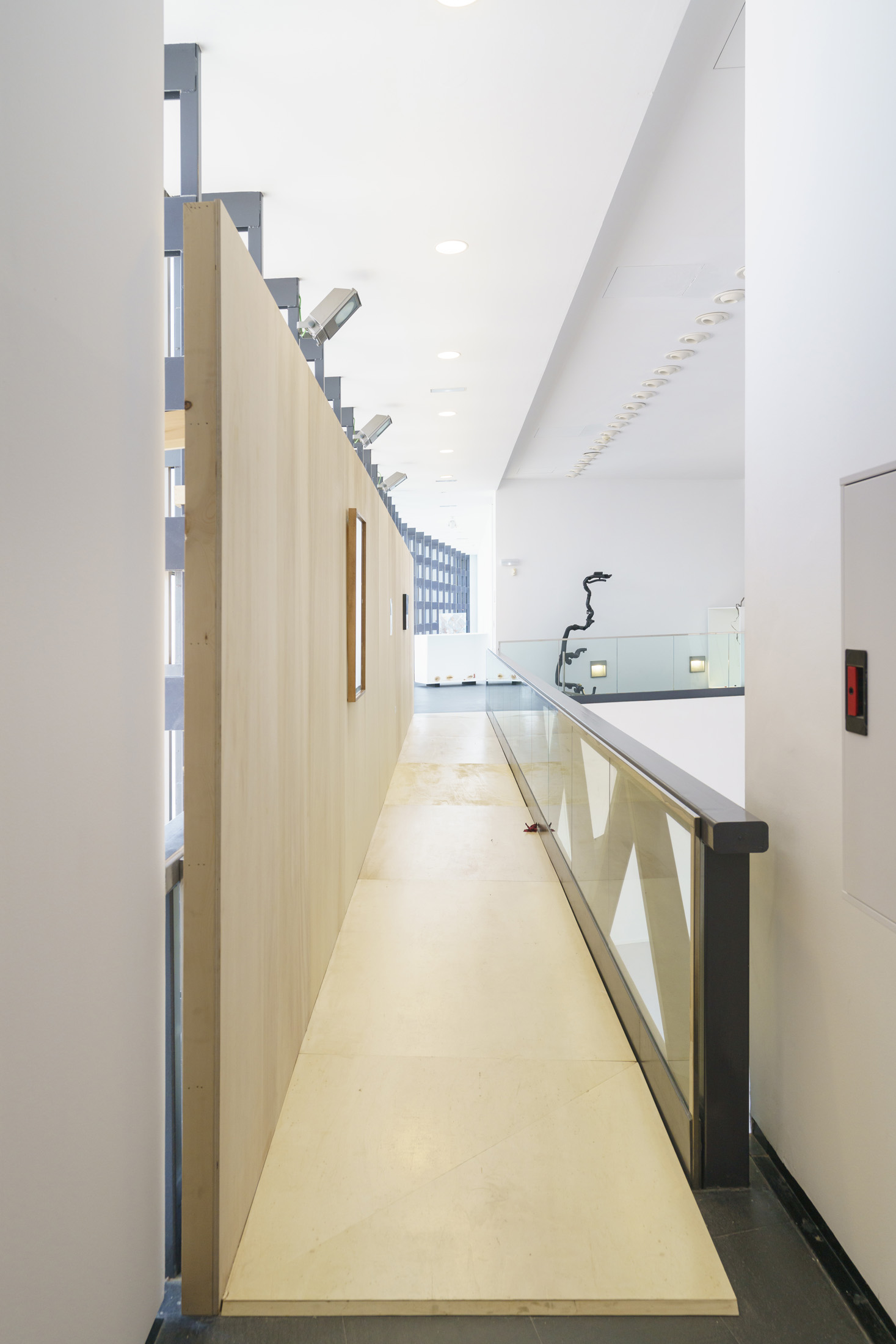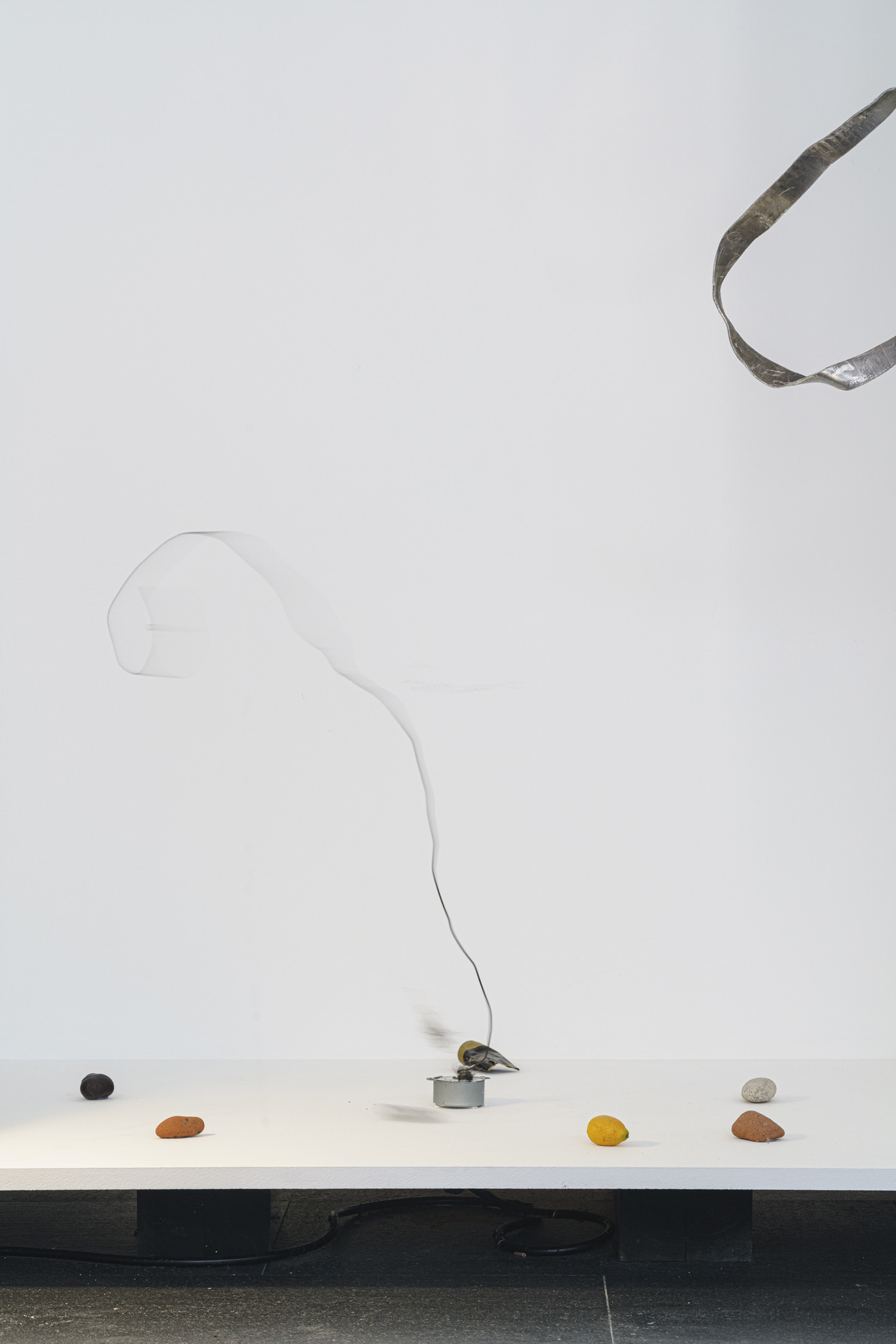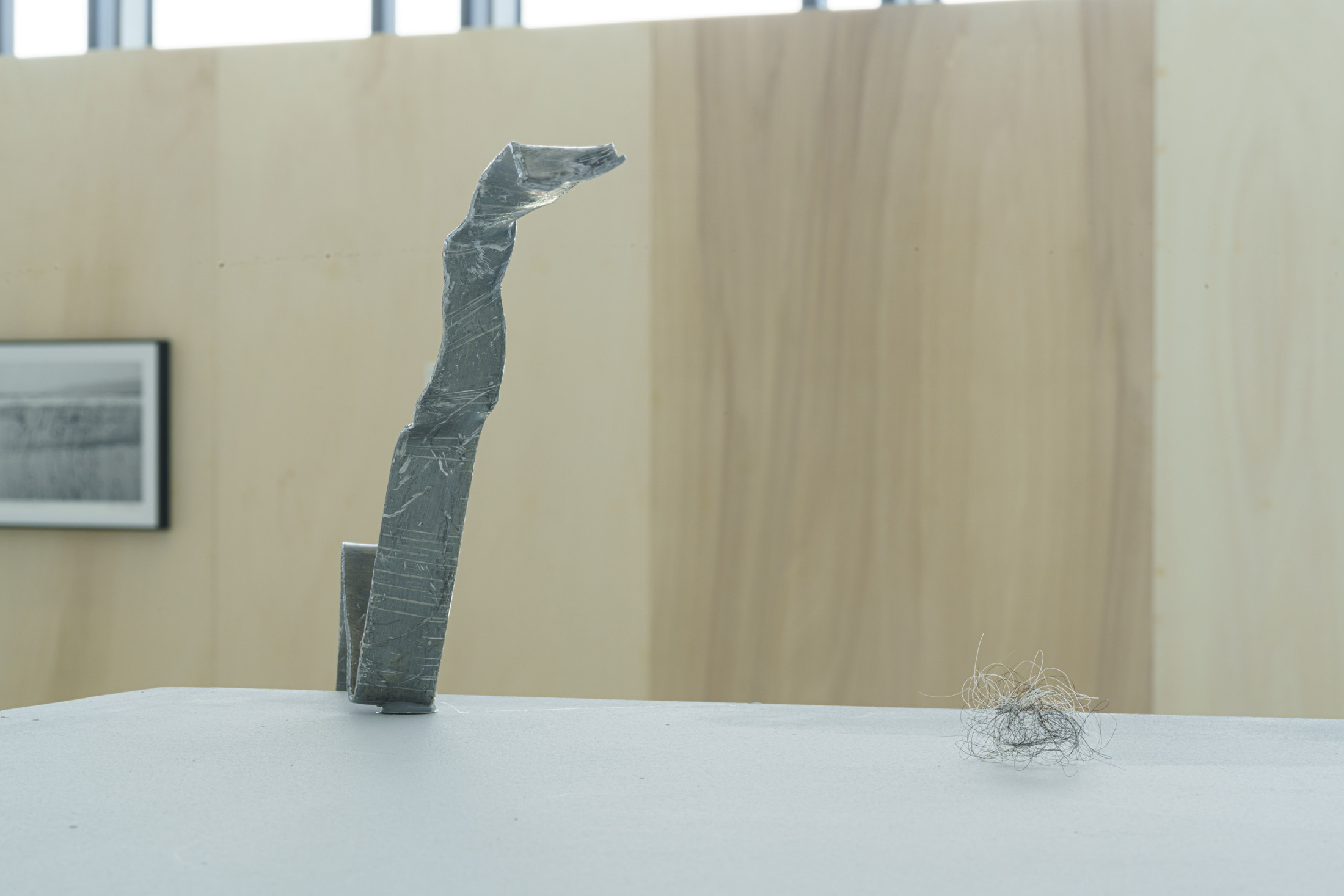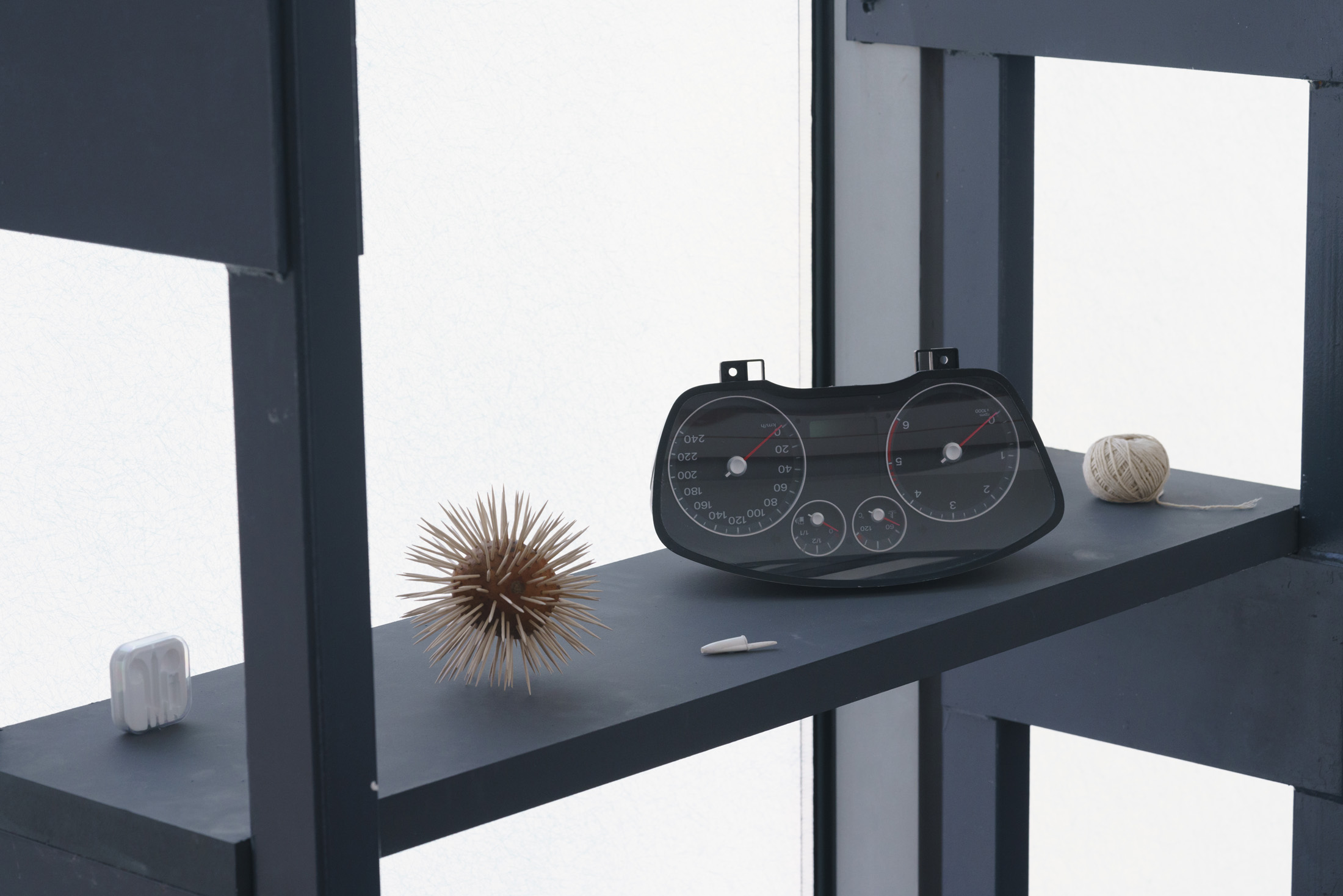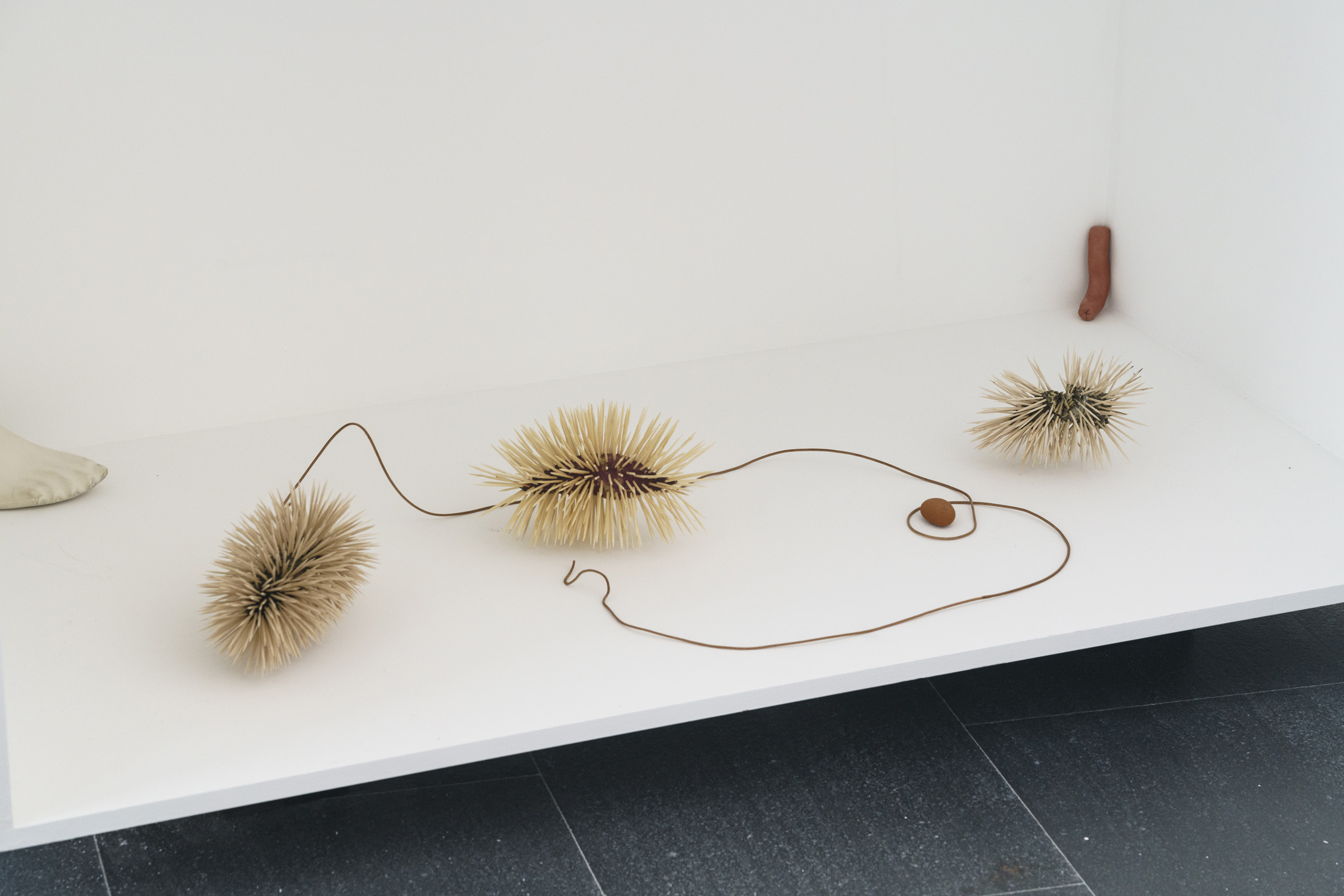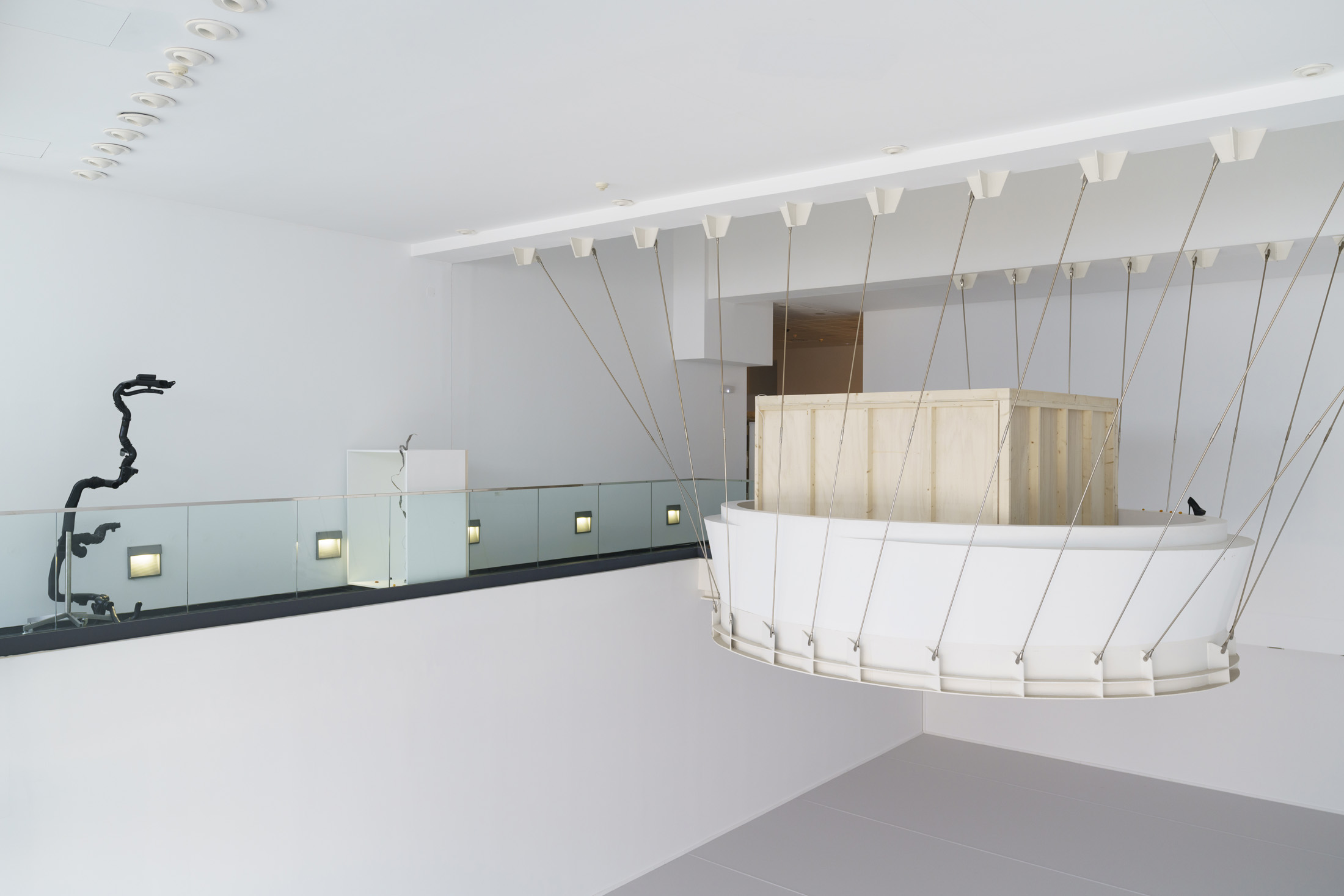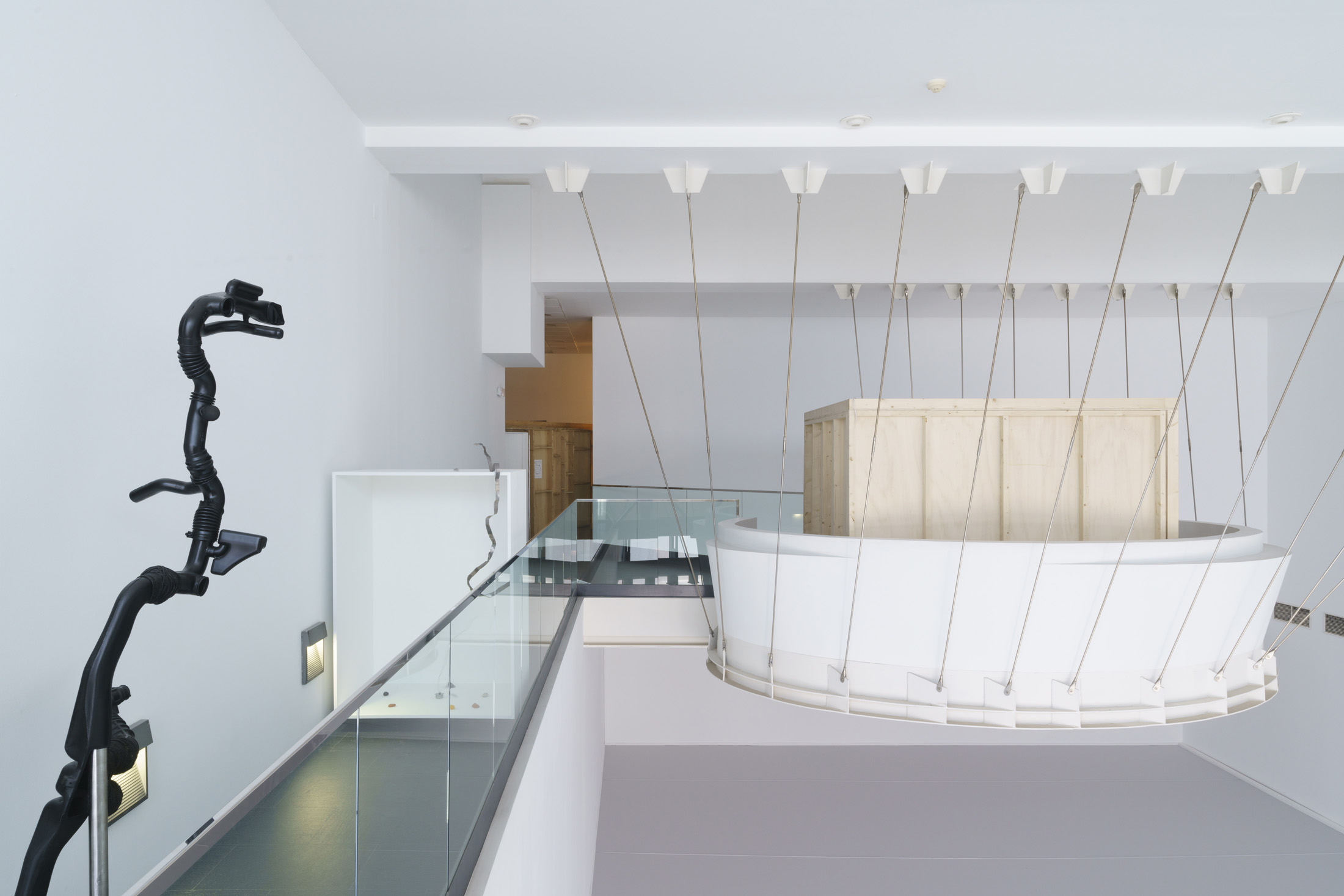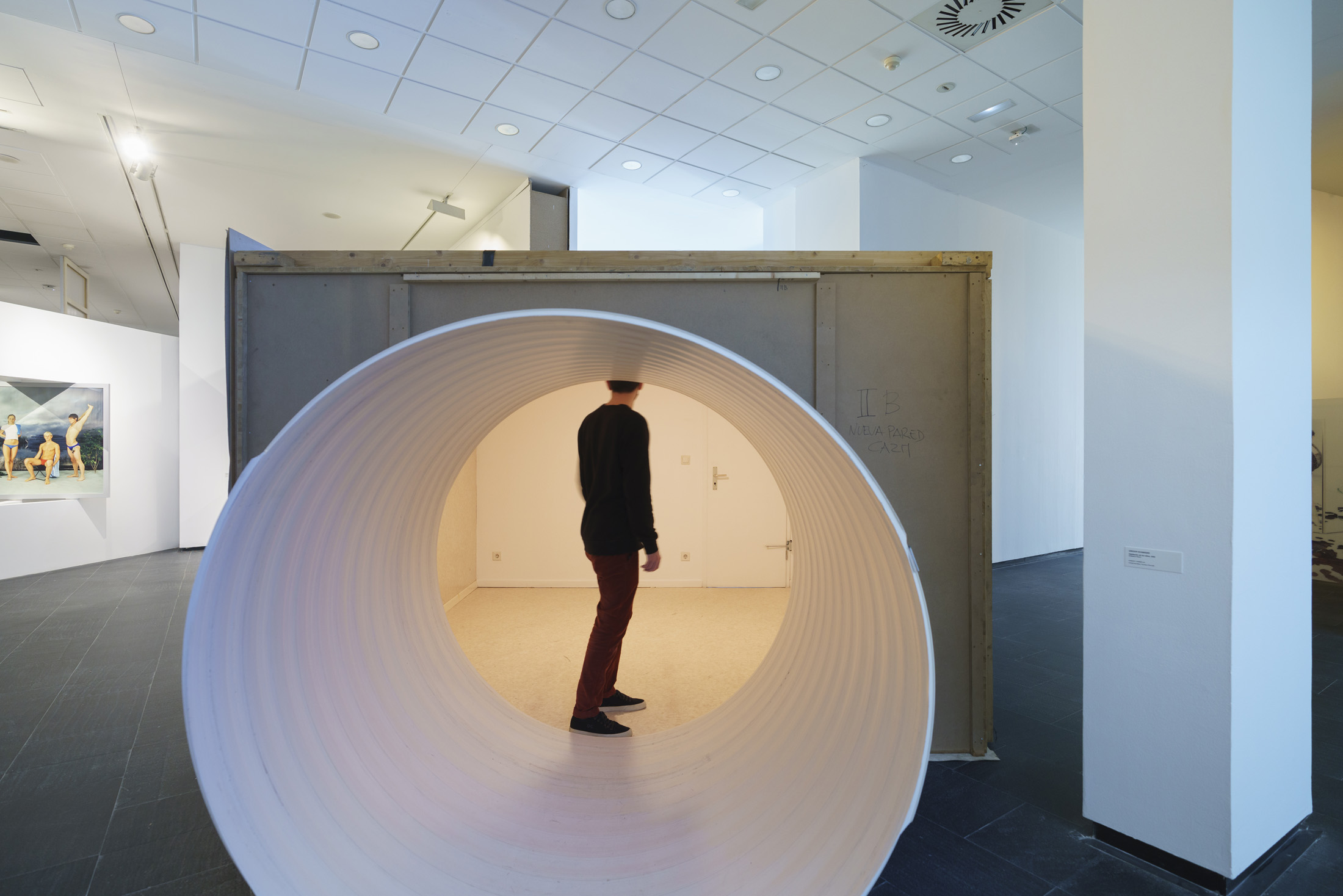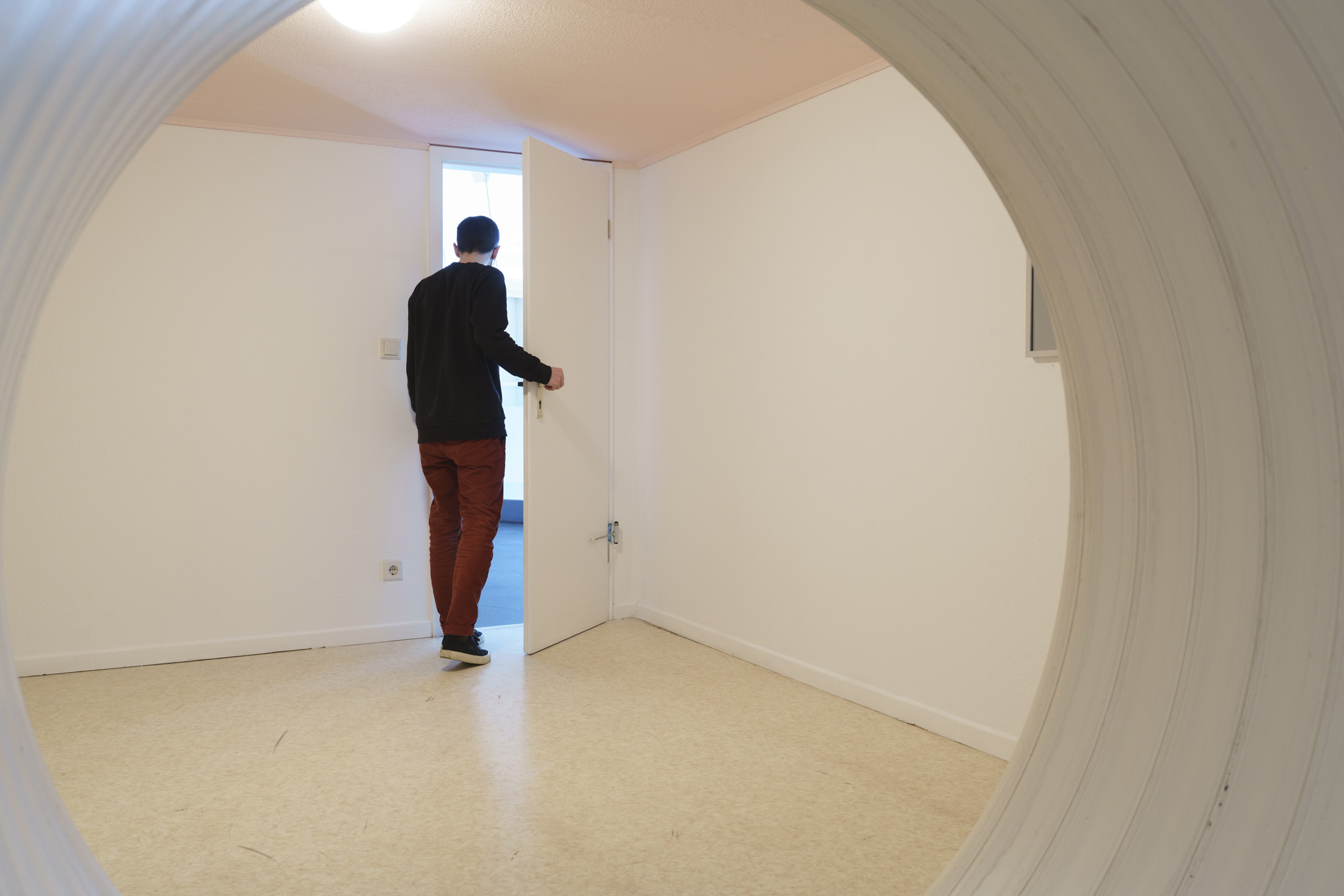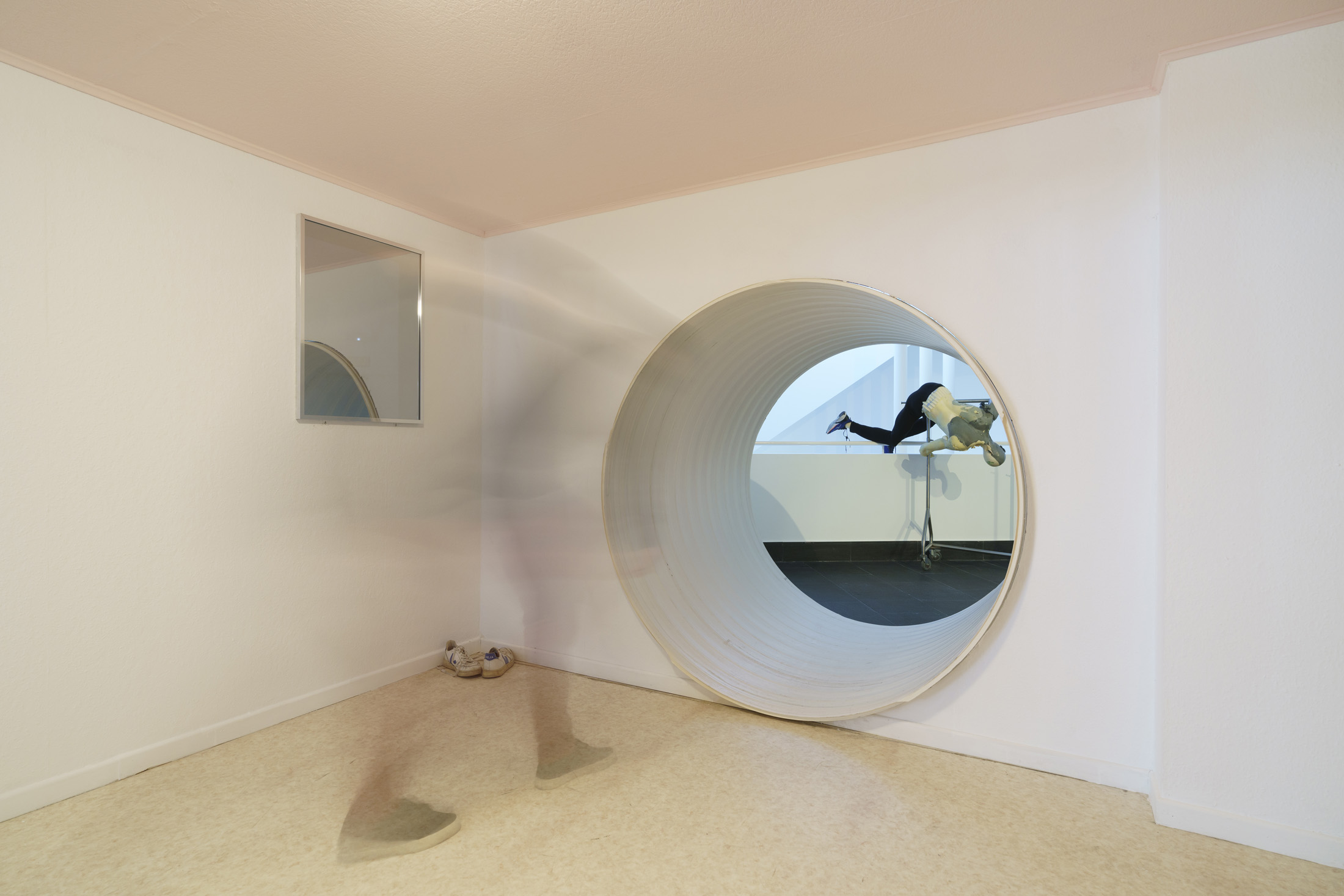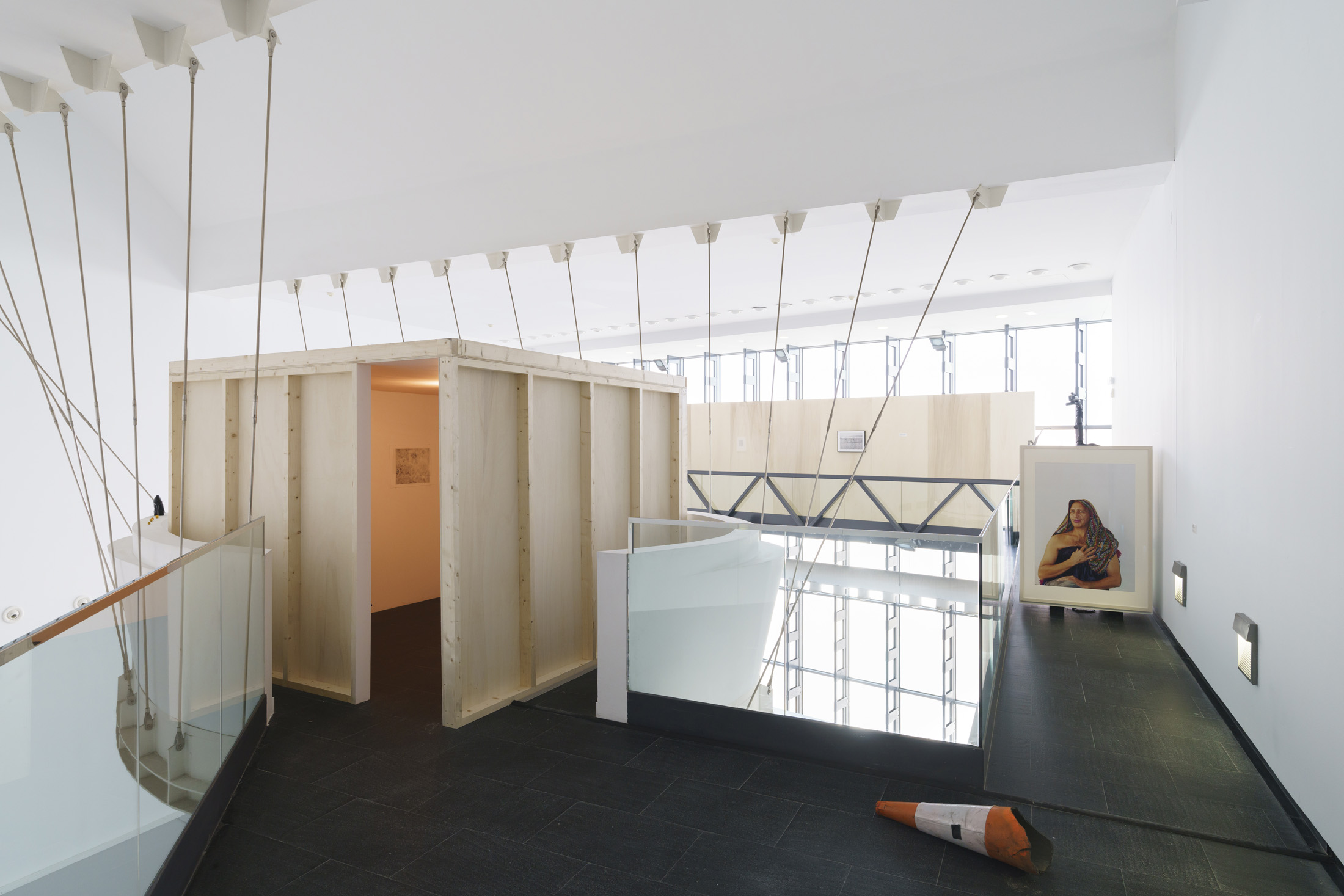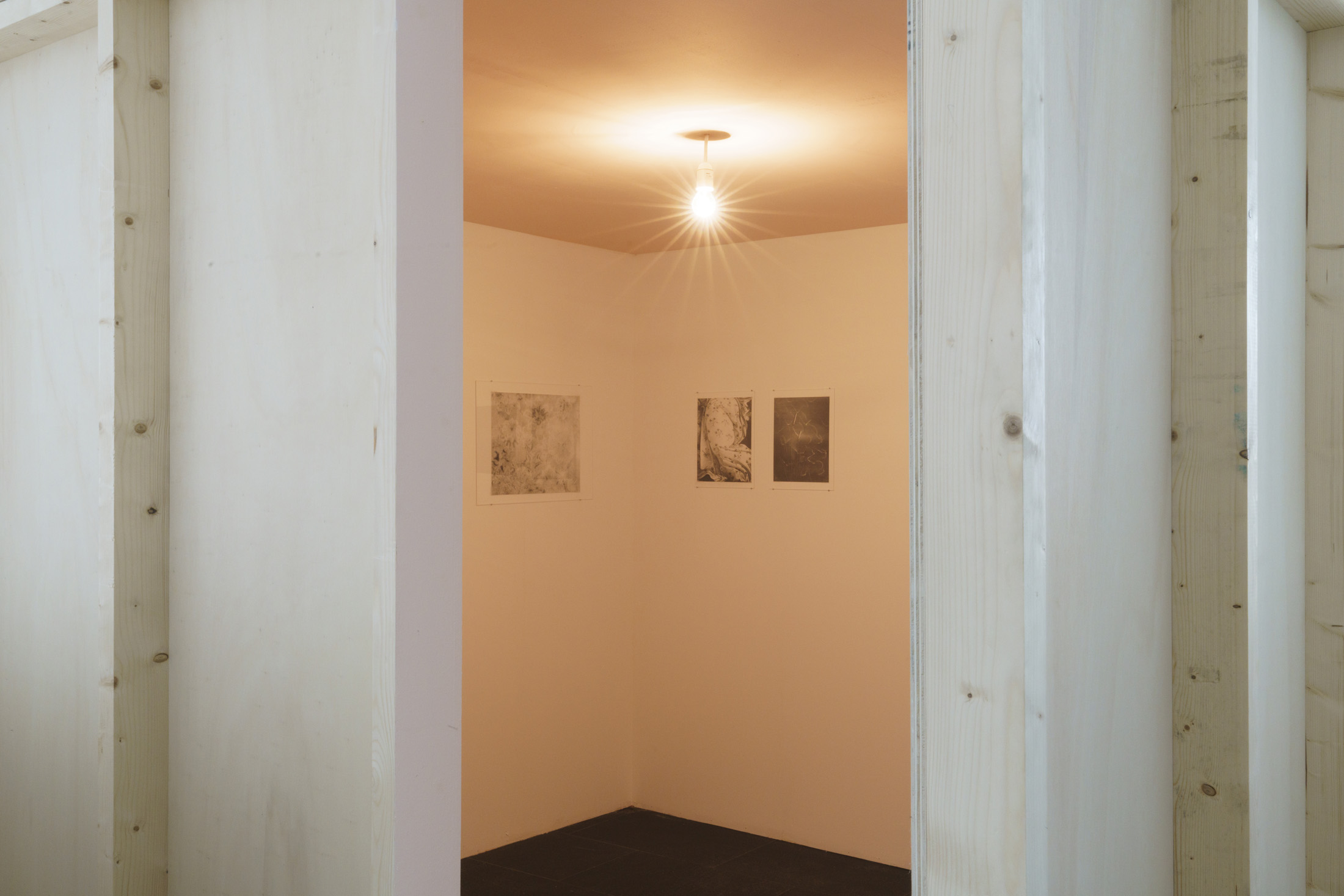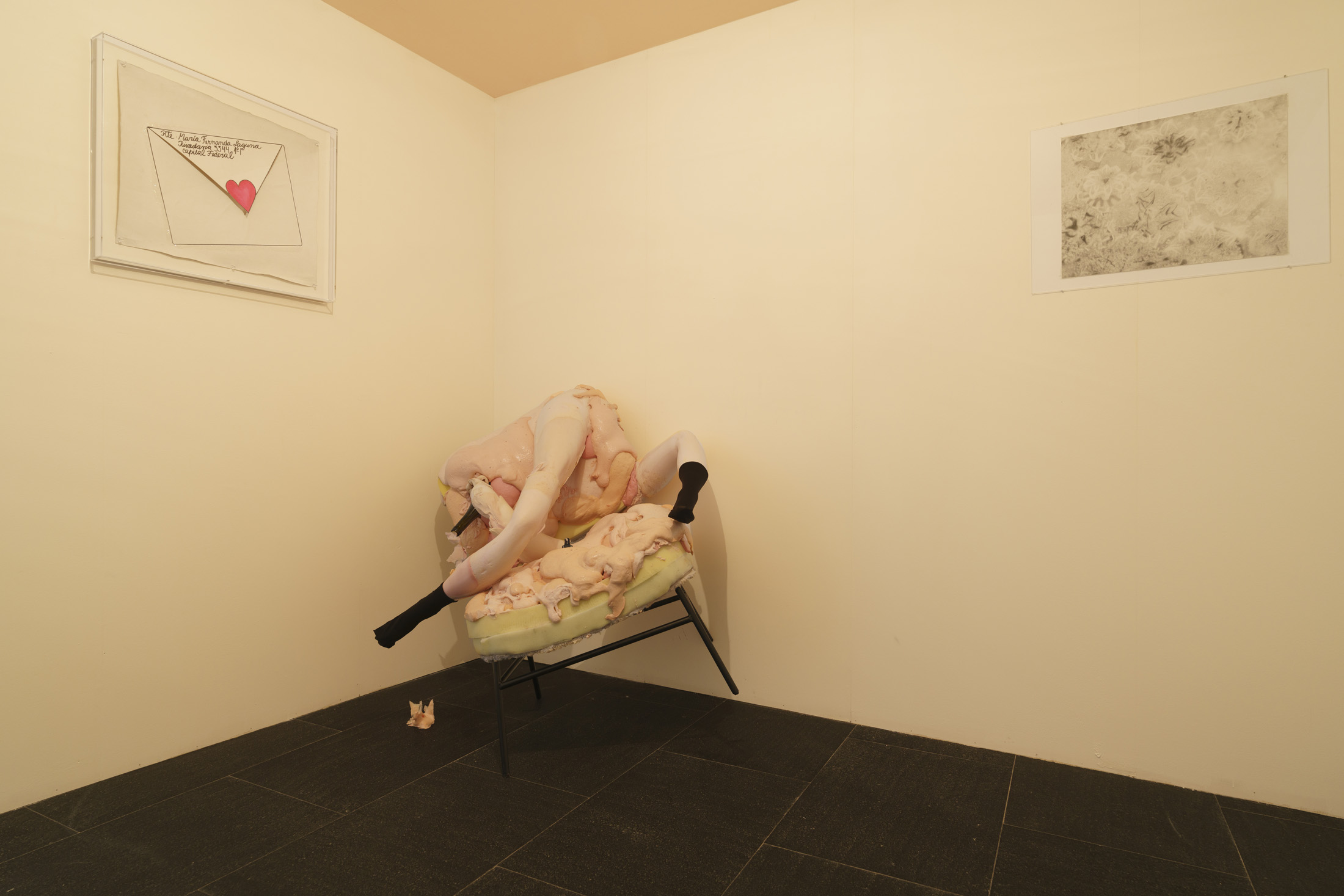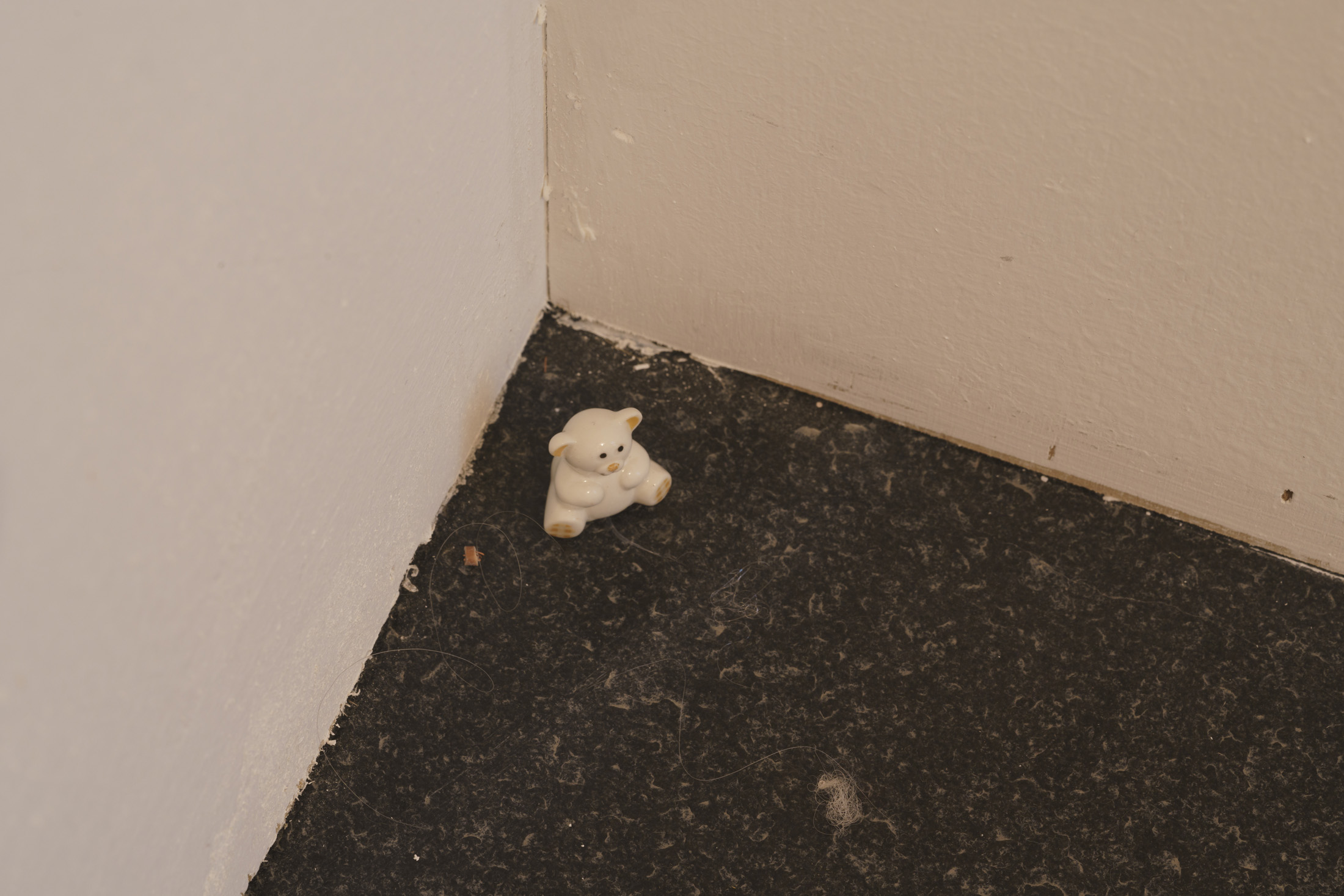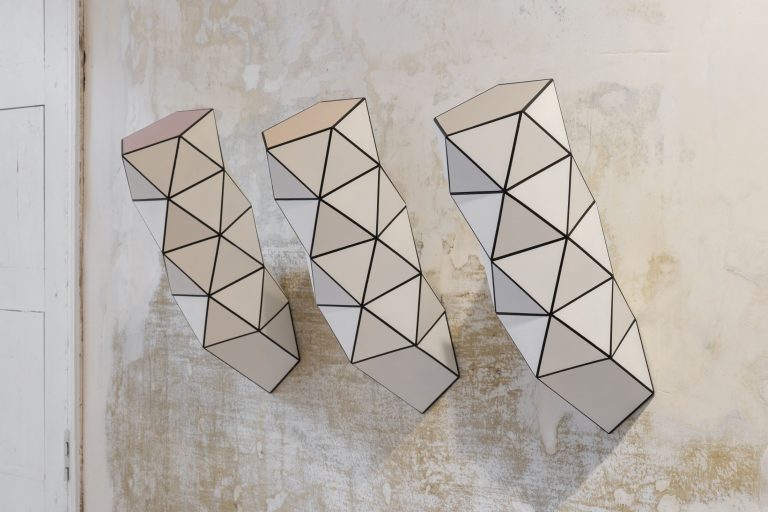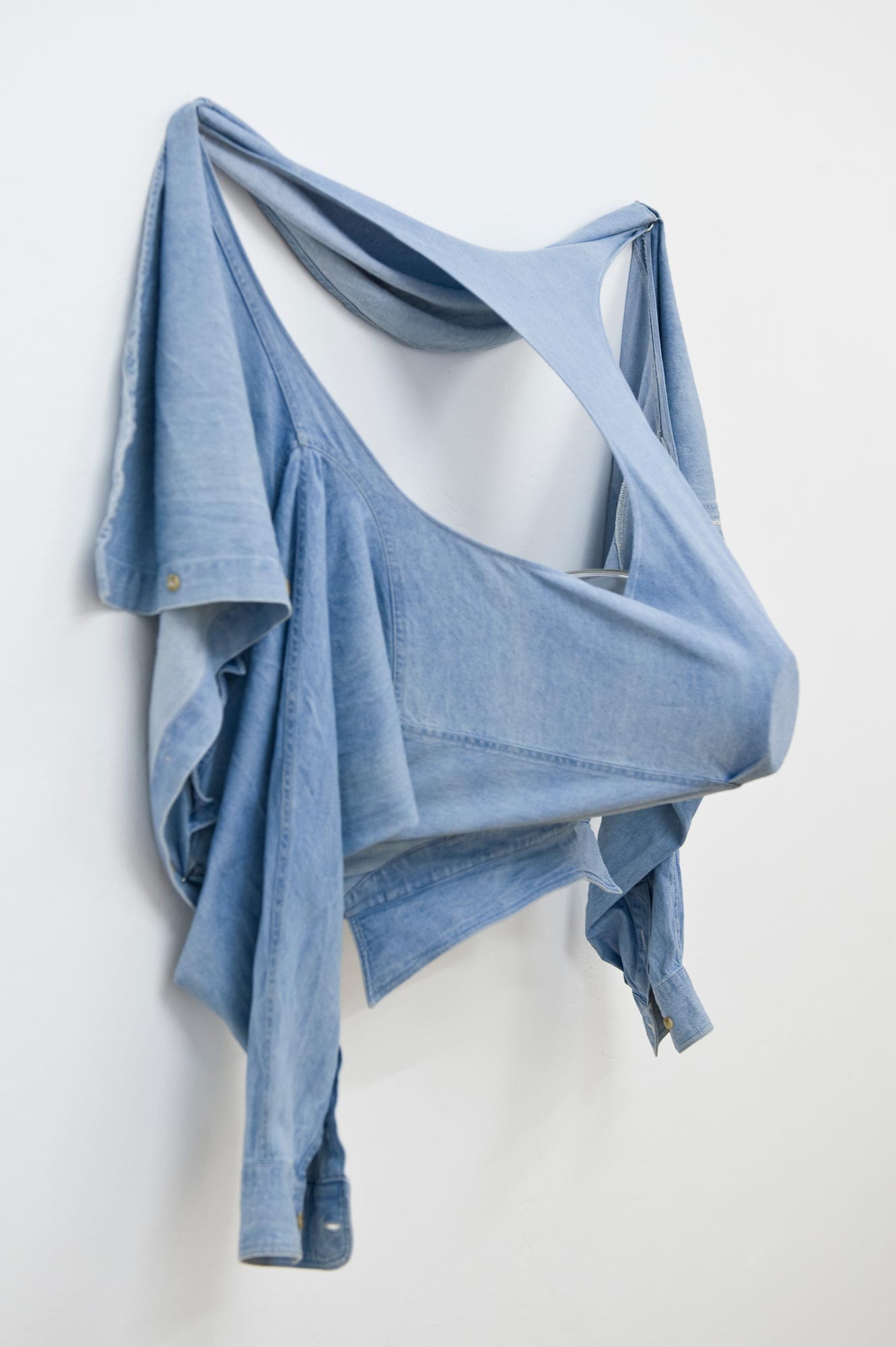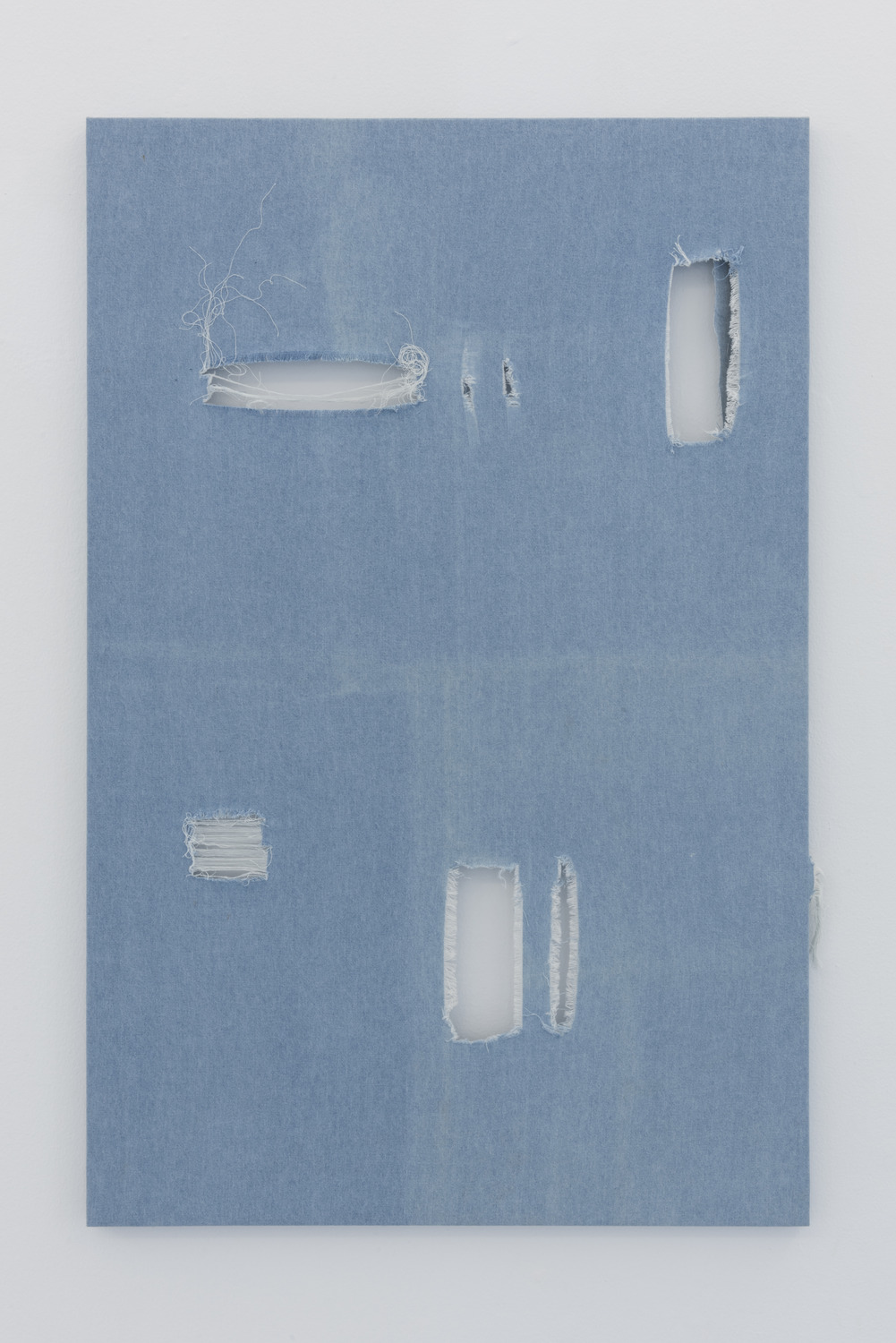Artist: Diego Bianchi (with works by Gregor Schneider, Henrik Olesen, Daniel Buren, Valery Katsuba, Joachim Koester, Frank Thiel, Sue Williams, James Bishop, Ricardo Cases, Günther Förg, David Hockney, Bruce Talamon, Juan Muñoz, Tania Pérez Cordova, Erwin Wurm, Ángel Bados, Cyprien Gaillard, Daniel Steegmann Mangrané, Kiko Pérez, Artur Barrio, Dan Flavin, Erró (Gudmundur Gudmundsson), Discoteca Flaming Star, Zoe Leonard, Bruce Talamon, Jochen Lempert, Fernanda Laguna, Ana Laura Aláez, Martin Parr, Thomas Demand, Jorge Molder, Sergey Bratkov, Jimmie Durham, Dora García, Txomin Badiola)
Exhibition title: Tactic Syntactic. Diego Bianchi
Curated by: Mariano Mayer
Venue: CA2M Centro de Arte dos de Mayo, Madrid, Spain
Date: February 19 – May 21, 2022
Photography: Jorge Anguita Mirón / all images copyright and courtesy of the artist, CA2M Centro de Arte dos de Mayo and the respective copyright holders
PRESENTATION
Diego Bianchi takes the patterns of understanding based on perception by the scruff of the neck and gives them a good shaking, urging us to break out of that straitjacket by means of disorder and absurdity. Each one of his sculptural works throws up a number of variables in form and meaning. These works can deliver everything from precarious architectural solutions, malfunctions and the exponential accumulation of urban degradation all the way to the soles of shoes on display in every shop window in the city of Buenos Aires. Leveraging this documentary and topographic approach to give shape to settings, patterns of consuming and behaviours that will define the material nature of a work is, in this case, less relevant than drawing attention to the way we observe things. Looking at his work forces you to ask questions about things we take for granted.
His whole practice is predicated by an endeavour to identify the set of underlying anthropomorphic conditions. His repertoire of bodies is put to work to construct a form, an assemblage, a conversion or a formless power, to discover muscular fragments without attributes relocated in the world of things.
Diego Bianchi engages with formless everyday waste in order to select remnants with the potential to achieve another degree of attention. The resulting set of perishable materials and detritus is more of a defence of uncertainty and unfinishedness than a poetic input in itself. His experimentation with reality, understood as a continuum of materialities, actions and affectivities, questions the trivial objects that are part of our everyday lives, the never-ending processes of production and deterioration, fragility and memory. The negotiation with the spirit of the age and especially with the inequality of the neoliberal period in which his works is inscribed responds to a way of understanding which is not necessarily critical, able to discern in the crisis a way of beginning.
CONTENT
Under a logic that makes chaos natural and order artificial, Diego Bianchi undertakes an act of transformation of the exhibition space. Syntactic Tactic. Diego Bianchi is an exercise in dismantling the white cube and accordingly of the art objects inscribed within it. Employing a form of artmaking akin to the palimpsest, the artist outlines movements from the marks left by others, and turns a series of works belonging to the collections of a museum, and the bodies that experience them, into the very substance of an exhibition. The project defies the distinctions between authorships and enables the artworks and the behaviours they activate to be transformed into elements of artistic production.
In Syntactic Tactic. Diego Bianchi the neutral space of a museum, characterized by the verticality of its lighting, is turned into building material. A physical and conceptual experiment and a prospective (not revisionist or retrospective) exhibition setting, in which a selection of over 50 artworks from the holdings of the museum (CA2M Collection and ARCO Collection) are not treated merely through the prism of contemplation and where the way they are received is successfully perverted.
This exhibition is part of the cycle:
Dubbing the Voice. Artist readings of Museo CA2M’s holdings
Museo Centro de Arte Dos de Mayo regularly invites artists to give their own personal readings of its collections in exhibitions that are both a sample of its holdings as well as an undercover solo show of their own work. Seen from the optic of an individual art practice, a collection is removed from academic narratives and exhibition conventions and creates disruptions, unforeseen interpretations and new ways of speaking that add to the work of radical imagination which is what characterizes any contemporary art institution. In this way, the museum’s holdings are not viewed as an end in themselves but from the potential they afford for production. Each exhibition will be built from the same collections, intuiting narratives of future forms of collecting through their differences and resonances. As exercises in ventriloquism over the museum in which the speech act belongs to the artists that are its very raison d’être.
THE ARTIST: DIEGO BIANCHI
Diego Bianchi was born in 1969 in Buenos Aires, where he lives and works. Among his most noteworthy exhibitions are INFLATION, Liverpool Biennial (2021); Sauvetage Sauvage and Softrealism, Galerie Jocelyn Wolff (Paris, 2020 & 2019); Museo Abandonado: Barrio Kronfus, Bienal Sur 2019 (Argentina); Meritocrazy, Pasto (Buenos Aires, 2019); El presente está encantador, Museo de Arte Moderno de Buenos Aires (2017); WasteAfterWaste, Perez Art Museum (Miami, 2015); Suspensión de la incredulidad: Experiencia infinita, Museo de Arte Latinoamericano de Buenos Aires (2015); Under de Si, in collaboration with Luis Garay (Matadero, Madrid, 2018, Wienner Festwochen, Austria and Bienal de Performance, Buenos Aires, 2015); El trabajo en Exhibición, Galerie Jocelyn Wolff (Paris, 2015); ON ON ON Indetermination, ABC Art Berlin Contemporary (2014); Into the wild meaning, Visual Arts Center (Texas, 2013). His work has also been seen at the 13th Istanbul Biennial (2013); 11th Lyon Biennial (2011) and the 10th Havana Biennial (2009).
Bianchi studied graphic design at the University of Buenos Aires and became actively involved in art practice in 2002. He took part in Pablo Siquier’s workshop within the programme of visual arts workshop C. C. Rojas-UBA-Kuitca 2003-2005 (Buenos Aires); and The Skowhegan School of Painting and Sculpture (Maine, 2006) and also in the Locust Project (Miami, 2008).
Since 2009 he has taught in the Artists Programme at Universidad Torcuato Di Tella giving workshops and annual symposiums. He has been an invited guest teacher at SESC São Paulo, Brazil and at HFBK in Dresden, Germany.
He has also published books, including Enlarge. Diego Bianchi Works 2003 -2010 (KBB, 2011); RUB. Perspectivas sobre la obra de Diego Bianchi, edited by Inés Katzenstein (Motto, 2018) and Diego Bianchi, El presente está encantador (Museo de Arte Moderno de Buenos Aires, 2019).
THE CURATOR: MARIANO MAYER
Mariano Mayer (Buenos Aires, Argentina, 1971) is a poet and freelance curator. Among his latest projects are NUNCA LO MISMO, jointly with Manuela Moscoso (ARCOmadrid 2021); REMITENTE (ARCOmadrid 2021); PRELIBROS (ARCOmadrid – Casa de América, Madrid, 2021); Jesús Hernández Verano. Treno (CIC El Almacén, Lanzarote, 2021); Azucena Vieites. Playing Across Papers (Sala Alcalá 31, Madrid, 2020); Distancias elásticas. Antonio Menchen y Cecilia Szalkowicz (Centro Párraga, Murcia, 2019); La música es mi casa. Gastón Pérsico (MALBA, Buenos Aires, 2017); En el ejercicio de las cosas, jointly with Sonia Becce (Plataforma Argentina–ARCOmadrid 2017); Isla de Ediciones, jointly with Cecilia Szalkowicz and Gastón Pérsico (arteBA, Buenos Aires, 2017/2016); Causal: Ignacio Fanti (The White Lodge, Córdoba, 2016); Valeria Maggi; (HACHE, Buenos Aires, 2016); Soy un libro que no he escrito ni he leído Capítulo I y II (Mite, Buenos Aires, 2014 and The Goma, Madrid, 2015); Fisicismos, jointly with Manuela Moscoso (Universidad Torcuato Di Tella, Buenos Aires, 2013); June Crespo: Reverso (Have a Window, Torino, 2013);Visible, Móvil, Vidente (Centro Párraga, Murcia, 2012–2013); XXIII Circuitos de Artes Plásticas (Sala de Arte Joven Comunidad de Madrid, 2012) and Plano, peso, punto y medida (Universidad Torcuato Di Tella, Buenos Aires, 2011).
His books include Fluxus Escrito (Caja Negra, Buenos Aires, 2019); Justus (Ayuntamiento de Léon, 2007) and Fanta (Corregidor, Buenos Aires, 2002). He has taken an active part in critical seminars: Paperetik hitzera, (Artium, Vitoria–Gasteiz, 2021); Sobre Fluxus Escrito (Bulegoa, Bilbao, 2020); Iconoclasia Fluxus (CAAM, Las Palmas de Gran Canaria, 2019); Fluxus Escrito (Bibli – El Ateneo de La Laguna, Tenerife, 2019); Pero… ¿Esto es arte? (CA2M, Móstoles, 2015); Comisariando el presente (La Casa Encendida, Madrid, 2015/2017) and Sexy Books for All Ages (Matadero Madrid, 2012). In 2016 he was Curator-Professor in the Artists Programme at Universidad Torcuato Di Tella, Buenos Aires and directed the programme on Argentinian art: “Una novela que comienza” (CA2M, Móstoles, 2017).

